Steve Ballmer
description: American businessman, former chief executive officer of Microsoft
121 results

Digital Wars: Apple, Google, Microsoft and the Battle for the Internet
by
Charles Arthur
Published 3 Mar 2012
Therefore, in determining the level of Microsoft’s market power, the relevant market is the licensing of all Intel-compatible PC operating systems world-wide. Findings of fact, United States of America v Microsoft Corporation, Civil Action 98-1232 (Issued November 1999) (the document is available in Adobe PDF, WordPerfect 5.1 and HTML formats, but no Microsoft-proprietary ones) Steve Ballmer Life changed at Microsoft in 2000. On 13 January Steve Ballmer, who in June 1980 had become its 30th employee, was promoted from heading its sales and support operations to chief executive. Bill Gates was still the chairman and ‘chief software architect’, with oversight of how the company should build its tools and products.
…
This ebook published in 2014 by Kogan Page Limited 2nd Floor, 45 Gee Street London EC1V 3RS UK www.koganpage.com © Charles Arthur, 2012, 2014 E-ISBN 978 0 7494 7204 7 Full imprint details Contents Introduction 01 1998 Bill Gates and Microsoft Steve Jobs and Apple Bill Gates and Steve Jobs Larry Page, Sergey Brin and Google Internet search Capital thinking 02 Microsoft antitrust Steve Ballmer The antitrust trial The outcome of the trial 03 Search: Google versus Microsoft The beginnings of search Google Search and Microsoft Bust Link to money Boom Random access Google and the public consciousness Project Underdog Preparing for battle Do it yourself Going public Competition Cultural differences Microsoft’s relaunched search engine Friends Microsoft’s bid for Yahoo Google’s identity The shadow of antitrust Still underdog 04 Digital music: Apple versus Microsoft The beginning of iTunes Gizmo, Tokyo iPod design Marketing the new product Meanwhile, in Redmond: Microsoft iPods and Windows Music, stored Celebrity marketing iTunes on Windows iPod mini The growth of iTunes Music Store Apple and the mobile phone Stolen!
…
Except that would never have happened: Gates knew the problem was there, and would never have let Spolsky and his team forget it if they hadn’t shown him that they knew it too during that meeting. And Spolsky knew Gates knew it. He contrasts Gates – with his deep understanding of the detail of the technology – with Ballmer, at the time Gates’s right-hand person, a Harvard graduate in economics and mathematics who was Microsoft’s 30th employee. ‘Steve Ballmer would never even know to ask a question like that,’ Spolsky says. ‘No offence to the present management of Microsoft. But it’s just hard to conceive that he would even understand that question if you were in the room while it was asked. Which is unfortunate, and I think says something about where Microsoft has gone, in the last decade.’

Hit Refresh: The Quest to Rediscover Microsoft's Soul and Imagine a Better Future for Everyone
by
Satya Nadella
,
Greg Shaw
and
Jill Tracie Nichols
Published 25 Sep 2017
Hit Refresh The Quest to Rediscover Microsoft’s Soul and Imagine a Better Future for Everyone Satya Nadella with Greg Shaw and Jill Tracie Nichols Photo On the morning of February 4, 2014, I was introduced to employees as Microsoft’s third CEO alongside Bill Gates and Steve Ballmer, the only CEOs in Microsoft’s forty-year history. Dedication To the two families that have shaped my life: Anu, our parents and our children; and my Microsoft family Contents Cover Title Page Photo Dedication Foreword Chapter 1: From Hyderabad to Redmond Chapter 2: Learning to Lead Chapter 3: New Mission, New Momentum Chapter 4: A Cultural Renaissance Chapter 5: Friends or Frenemies?
…
Kevin Turner, a former Wal-Mart executive, who was chief operating officer and led worldwide sales. Harry Shum, who leads Microsoft’s celebrated Artificial Intelligence and Research Group operation, received his PhD in robotics from Carnegie Mellon and is one of the world’s authorities on computer vision and graphics. I had been a member of the SLT myself when Steve Ballmer was CEO, and, while I admired every member of our team, I felt that we needed to deepen our understanding of one another—to delve into what really makes each of us tick—and to connect our personal philosophies to our jobs as leaders of the company. I knew that if we dropped those proverbial guns and channeled that collective IQ and energy into a refreshed mission, we could get back to the dream that first inspired Bill and Paul—democratizing leading-edge computer technology.
…
In these pages, you will follow three distinct storylines. First, as prologue, I’ll share my own transformation moving from India to my new home in America with stops in the heartland, in Silicon Valley, and at a Microsoft then in its ascendancy. Part two focuses on hitting refresh at Microsoft as the unlikely CEO who succeeded Bill Gates and Steve Ballmer. Microsoft’s transformation under my leadership is not complete, but I am proud of our progress. In the third and final act, I’ll take up the argument that a Fourth Industrial Revolution lies ahead, one in which machine intelligence will rival that of humans. We’ll explore some heady questions.
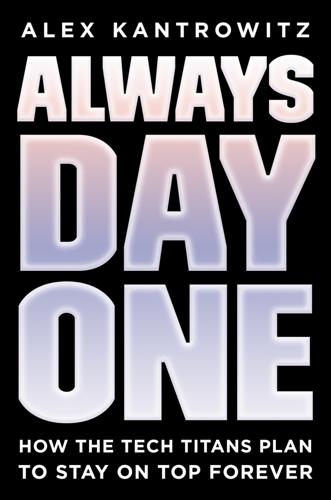
Always Day One: How the Tech Titans Plan to Stay on Top Forever
by
Alex Kantrowitz
Published 6 Apr 2020
GeekWire, July 4, 2012. https://www.geekwire.com/2012/microsofts-lost-decade-vanity-fair-piece-accurate-incomplete. “What began as a lean competition machine”: Eichenwald, Kurt. “How Microsoft Lost Its Mojo: Steve Ballmer and Corporate America’s Most Spectacular Decline.” Vanity Fair. Vanity Fair, July 24, 2012. https://www.vanityfair.com/news/business/2012/08/microsoft-lost-mojo-steve-ballmer. Ballmer stepped down: Bishop, Todd. “Microsoft Names Satya Nadella CEO; Bill Gates Stepping Down as Chairman to Serve as Tech Adviser.” GeekWire. GeekWire, February 4, 2014. https://www.geekwire.com/2014/microsoft-ceo-main.
…
Starting as an online directory, the company reinvented itself with the News Feed, and it’s reinventing today by moving from broadcast sharing to intimate sharing: giving the News Feed over to Facebook Groups—a series of smaller networks—and treating messaging as a first-class citizen. In the most fickle of all industries, social media, Facebook still leads. Until recently, it seemed like Microsoft’s inventing days were over. The company was so attached to Windows it almost let the future pass it by. But with a leadership change from Steve Ballmer to Satya Nadella, the company returned to Day One and embraced cloud computing, a threat to desktop operating systems like Windows, and became the world’s most valuable company once again. Apple under Steve Jobs developed the iPhone, a device that rendered desktop computers like the Mac and portable music players like the iPod less relevant but also set the company up for years of success.
…
Apple is a company lacking democratic invention, constraint-free hierarchy, free-flowing collaboration, and useful internal technology. It’s stuck in Day Two, and as iPhone sales slow, it’s going to have to adjust. We’ll head to Microsoft for chapter five, where Satya Nadella is using the Engineer’s Mindset to spark a new era of invention inside the company. Nadella’s approach is a departure from that of his predecessor, Steve Ballmer, a case study in favor of implementing the systems outlined in this book. The Engineer’s Mindset isn’t exclusively the territory of those who can code. It is, after all, a mindset, not a set of computer skills. Nor is it the province of the tech giants alone. Smaller companies can apply it just as effectively.
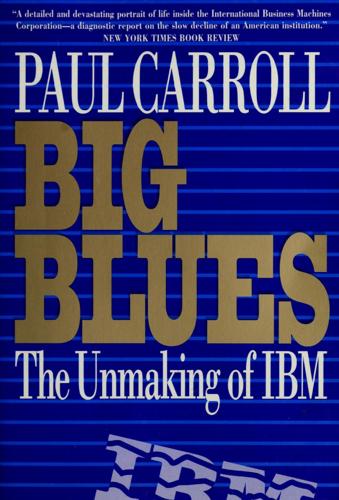
Big Blues: The Unmaking of IBM
by
Paul Carroll
Published 19 Sep 1994
They w ent through the usual rigmarole, with Gates having to sign BIG BLUES 9 nondisclosure agreem ents that said he wouldn’t think of using any infor mation IBM disclosed to him; that IBM could use whatever Gates happened to say; that Gates would, when pressed, insist he had never heard of a company with the initials IBM and that, even if he had, he would certainly never sue it. Gates then brought to the meeting Steve Ballmer, a college pal with a strong Nordic face and tiny icy blue eyes. Ballmer figures he was invited because his one year at business school meant that he was the only one at the company who knew how to wear a suit. The three-hour meeting was informal, with the four just chatting about opportunities in small com puters.
…
Estridge needed to have people push Gates hard to make sure that he could really deliver an operating system in time. W ithout an op erating system, there would be no interesting software. W ithout soft ware, the PC would make a nice paperweight. W hen Gates was sum m oned to Boca Raton for the first time at the end of Septem ber, he and Steve Ballmer worked for days on their proposal. Jack Sams, still the IBM liaison to Microsoft, got involved, too, offering avuncular advice on how IBM meetings tended to go, how to behave, who the im portant players at the meeting would be, and so forth. Sams also offered some advice that IBM now may wish he hadn’t: H e suggested that Microsoft raise its asking price in its proposed con tract with IBM.
…
The programm ers at M icro soft found it odd that, even though the PC was IBM ’s smallest project, it still had m ore people writing specs for Microsoft’s operating system than Microsoft had actually writing the operating system. Estridge also dispatched people to Microsoft to make sure it was keeping its work secret. H e may have been a cowboy, but even he was enough of a product of the IBM culture that he couldn’t avoid the penchant for secrecy at all costs. Steve Ballmer got a call one day from an IB M er who said he w anted to arrange a visit. Ballmer said, “Sure, maybe in a few days when things settle down.” Then he casually in quired about the w eather in Florida. The IBM er said he didn’t have a clue, because he was calling from a pay phone across the street from BIG BLUES 35 the Microsoft offices in Bellevue, Washington, and really wanted to come by immediately to check up on how Microsoft had filed certain docum ents.
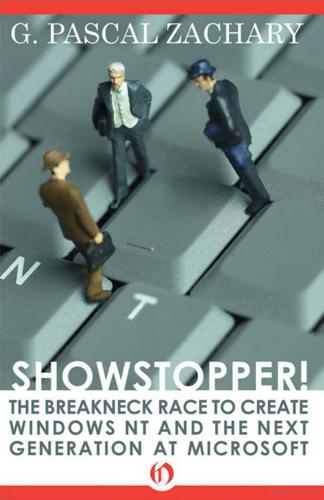
Showstopper!: The Breakneck Race to Create Windows NT and the Next Generation at Microsoft
by
G. Pascal Zachary
Published 1 Apr 2014
He felt he had another big program in him and worried only that Gates might prove fickle or vindictive, canceling his project or burying him under endless demands. Gates could not think far enough ahead to know for sure if in Cutler he had the architect of Microsoft’s next generation of software. He simply was “excited beyond belief,” said Steve Ballmer, Microsoft’s second-in-command. “We were jazzed: Cutler joining Microsoft. This was incredible—a match made in heaven.” Cutler arrived at Microsoft on October 31, 1988. A few days later, Rob Short, Cutler’s chief computer designer, resigned from Digital to become the first to join Cutler’s new team.
…
“He’s a guy who is serious about his job... the ultimate professional,” Gates said. “That doesn’t make him easy to talk to. Before you go to see Dave you think, ‘Jeez, am I going to say something stupid?’ ” Gates worried that Cutler, surrounded by familiar faces, might be too isolated from the rest of Microsoft. He asked Steve Ballmer, nominally Cutler’s boss, to teach him the company’s ways. Ballmer was a sound choice to serve as Cutler’s tutor. He was the yin to Gates’s yang. A Detroit native and the son of an automobile executive, he had met Gates at Harvard, and the two were close friends. After stints at business school and Procter & Gamble, Ballmer, who had never written a program, joined Microsoft in 1980 as the company’s first general manager.
…
Cutler thought the i860, which he had examined at Digital, had serious problems,” but he acceded to Myrhvold’s decision. After all, Myrhvold was one of his few allies. Many people at Microsoft believed the company should write software only for existing PC hardware and not waste time and money on portable software, whose following was unproved. “While Bill [Gates], Steve [Ballmer] and I support your project, a lot of other people don’t,” Myrhvold explained. “They don’t understand it or think it’s too far out or crazy. Don’t let this [criticism] bother you or slow you down.” When it came to forging a link between Cutler’s crew and the Microsofties, Gates had one more hand to play, assigning a veteran Microsoft programmer named Steven Wood to Cutler’s all-Digital team.

Fire in the Valley: The Birth and Death of the Personal Computer
by
Michael Swaine
and
Paul Freiberger
Published 19 Oct 2014
Our primary debt is to the people who lived this story and graciously granted us entry into what is in fact their personal history—through hundreds of hours of interviews and generous access to documents, records, letters, diaries, time lines, telexes, and photographs. Among others, we are grateful to the following individuals: Scott Adams, Todd Agulnick, David Ahl, Alice Ahlgren, Bob Albrecht, Paul Allen, Dennis Allison, Bill Anderson, Bill Baker, Steve Ballmer, Rob Barnaby, John Barry, Allen Baum, John Bell, Tim Berners-Lee, Tim Berry, Ray Borrill, Stewart Brand, Dan Bricklin, Keith Britton, David Bunnell, Nolan Bushnell, Maggie Canon, David Carlick, Douglas Carlston, Mark Chamberlain, Hal Chamberlin, Roger Chapman, Alan Cooper, Sue Cooper, Ben Cooper, John Craig, Andy Cunningham, Eddie Curry, Steve Dompier, John Draper, John Dvorak, Doug Engelbart, Chris Espinosa, Gordon Eubanks, Ed Faber, Federico Faggin, Lee Felsenstein, Bill Fernandez, Todd Fischer, Richard Frank, Bob Frankston, Paul Franson, Nancy Freitas, Don French, Gordon French, Howard Fulmer, Dan Fylstra, Mark Garetz, Harry Garland, Jean-Louis Gassee, Bill Gates, Bill Godbout, John Goodenough, Chuck Grant, Wayne Green, Dick Heiser, Carl Helmers, Kent Hensheid, Andy Hertzfeld, Ted Hoff, Thom Hogan, Rod Holt, Randy Hyde, Peter Jennings, Steve Jobs, Bill Joy, Philippe Kahn, Mitch Kapor, Vinod Khosla, Guy Kawasaki, Gary Kildall, Joe Killian, Dan Kottke, Barbara Krause, Tom Lafleur, Jaron Lanier, Phil Lemons, Phil Levine, Andrea Lewis, Bill Lohse, Mel Loveland, Scott Mace, Regis McKenna, Marla Markman, Mike Markkula, Bob Marsh, Patty McCracken, Dorothy McEwen, Patrick McGovern, Scott McNealy, Roger Melen, Seymour Merrin, Edward Metro, Vanessa Mickan, Jill Miller, Dick Miller, Michael Miller, Fred Moore, Gordon Moore, Lyall Morrill, George Morrow, Jeanne Morrow, Theodor Holm Nelson, Robert Noyce, Tom and Molly O’Neill, Terry Opdendyk, Adam Osborne, Chuck Peddle, Harvard Pennington, Joel Pitt, Fred “Chip” Poode, Frank and Susan Raab, Jeff Raikes, Janet Ramusack, Jef Raskin, Ed Roberts, Roy Robinson, Tom Rolander, Phil Roybal, Seymour Rubinstein, Sue Runfola, Chris Rutkowski, Paul Saffo, Art Salsberg, Wendell Sanders, Ed Sawicki, Joel Schwartz, John Sculley, Jon Shirley, John Shoch, Richard Shoup, Michael Shrayer, Bill Siler, Les Solomon, Deborah Stapleton, Alan Stein, Barney Stone, Don Tarbell, George Tate, Paul Terrell, Larry Tesler, Glenn Theodore, John Torode, Jack Tramiel, Bruce Van Natta, Jim Warren, Larry Weiss, Randy Wigginton, Margaret Wozniak, Steve Wozniak, Larry Yaeger, Greg Yob, and Pierluigi Zappacosta.
…
“How about next week?” he asked. “We’ll be on a plane in two hours,” said the IBM man. Gates proceeded to cancel his next day’s appointment with Atari chairman Ray Kassar. “IBM is a pretty big company,” he explained sheepishly. Because IBM was indeed a pretty big company, he decided to turn to Steve Ballmer, his advisor in business matters and a former assistant product manager at Procter & Gamble. Gates had known Ballmer when he attended Harvard in 1974. In 1979, when Gates decided that Microsoft was getting difficult to manage, he hired Ballmer. Ballmer was brash and ambitious. After Harvard, he had entered Stanford University’s MBA program but had dropped out to start making money sooner.
…
Gates had played poker during the evenings in the Harvard dorms, and after being cleaned out, he often went to Ballmer to describe the game. As they started working together at Microsoft in 1980, Gates found he still enjoyed discussing things with his friend, who quickly became one of his closest business confidants, and he naturally turned to him after IBM’s call. * * * Figure 85. Steve Ballmer and Bill Gates Gates’s ebullient college buddy would go on to replace him as Microsoft CEO. (Courtesy of Sarah Hinman, Microsoft Museum) “Look, Steve,” Gates said, “IBM is coming tomorrow. We better show those guys a little depth. Why don’t we both sit in on the meeting?” Neither of them could be sure that the call was anything special, but Gates couldn’t help getting worked up over it.
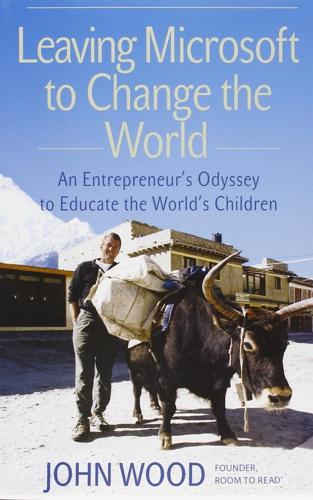
Leaving Microsoft to Change the World: An Entrepreneur's Odyssey to Educate the World's Children
by
John Wood
Published 28 Aug 2006
It might as well have added the word “loser” at the end. With the software industry doubling every year, and Microsoft fighting to capture market share in every major category, the stakes seemed high enough to justify self-sacrifice. The corporate culture reinforced this mania. It wasn’t until I finished a set of meetings with Steve Ballmer, Microsoft’s hard-charging, demanding, and voluble second-in-command, that I convinced myself that I had earned a break. Ballmer was in Sydney reviewing our work in Asia. When we finished his business-review meetings, a two-day-long event where Ballmer tended to shout and harangue, a colleague—Ben—suggested we unwind by going to a slide show about trekking in Nepal given by a local adventure travel company.
…
When the presenter mentioned that the Annapurna Circuit was a “classic trek that takes three weeks, covers two hundred miles, and gets you as far out in the Himalayas as you could imagine,” I mentally began booking the time off. Next stop, Nepal. Over a Mongolian hot-pot dinner with Ben, I joked that maybe if you went high enough into the Himalayas, you could not hear Steve Ballmer screaming at you. BACK IN NEPAL, CROWING ROOSTERS WOKE ME JUST BEFORE SUNRISE. The Timex Ironman read six o’clock. I debated snoozing a bit longer before meeting with Pasupathi for tea. The Himalayan dawn was cold; the four-season North Face bag felt like a pizza oven. But excitement over finally being in Nepal won out.
…
But there were no guarantees, and only hard work and smart strategic thinking would increase the odds of this calculated risk paying off. Like much of history, it seems obvious in retrospect that this was a fantastic trade-off, but at the time none of us knew. By 1999, those of us who had been at the company for a long time had done quite well. I give most of the credit to Bill and Steve Ballmer for their visionary leadership and their tenacious attention to detail. The two of them reminded me of a theory of Warren Buffett’s that I had read—whom you work for makes a big difference. Buffett recalled that a long time ago, baseball players like Babe Ruth and Lou Gehrig voted a full share of their World Series proceeds to their batboy.

Start With Why: How Great Leaders Inspire Everyone to Take Action
by
Simon Sinek
Published 29 Oct 2009
Homes Have Outhouses than TiVos”: Bradley Johnson, “Analysts Mull Future Potential of PVR Ad-Zapping Technology,” Advertising Age, November 4, 2002, http://people.ischool.berkeley.edu/~hal/Courses/StratTech09/Lectures/Networks/Articles/tivo-losing-money.html. 128 “There are two types of laws”: Martin Luther King Jr., “Letter from a Birmingham Jail,” http://www.thekingcenter.org/prog/non/Letter.pdf. Chapter 8: Start with Why, but Know How 133 Steve Ballmer, the man who replaced Bill Gates as CEO of Microsoft: “Steve Ballmer Going Crazy,” March 31, 2006, http://www.youtube.com/watch?v=wvsboPUjrGc. 134 the Bill and Melinda Gates Foundation: http://www.gatesfoundation.org/Pages/home.aspx. 135 Raised in Ohio, sixty miles from Dayton, Neil Armstrong grew up: Nick Greene, “Neil Armstrong Biography: First Man of the Moon,” About.com, http://space.about.com/od/astronautbiographies/a/neilarmstrong.htm. 138 What Ralph Abernathy lent the movement was something else: “Abernathy, Ralph David (1926–1990),” Martin Luther King, Jr., Research and Education Institute, http://mlk-kpp01.stanford.edu/index.php/kingpapers/article/abernathy_ralph_david_1926_1990/. 140 The pessimists are usually right: Thomas Friedman, The World Is Flat: A Brief History of the 21st Century.
…
And everyone there that day, regardless of skin color or race or sex, trusted each other. It was that trust, that common bond, that shared belief that fueled a movement that would change a nation. We believed. We believed. We believed. PART 4 HOW TO RALLY THOSE WHO BELIEVE 8 START WITH WHY, BUT KNOW HOW Energy Excites. Charisma Inspires. RAH!!!! With a roar, Steve Ballmer, the man who replaced Bill Gates as CEO of Microsoft, bursts onto the stage of the company’s annual global summit meeting. Ballmer loves Microsoft—he says so in no uncertain words. He also knows how to pump up a crowd. His energy is almost folkloric. He pumps his fists and runs from one end of the stage to the other, he screams and he sweats.
…
Good Successions Keep the WHY Alive There were three words missing from Bill Gates’s goodbye speech when he officially left Microsoft in June 2008. They are three words he probably doesn’t even realize need to be there. “I’ll be back.” Though Gates abdicated his role as CEO of Microsoft to Steve Ballmer in 2000 to lend more time and energy to the Bill and Melinda Gates Foundation, he still maintained a role and a presence at the Microsoft headquarters in Redmond, Washington. His plan was always to completely leave the company in the care of others, but like a lot of founders, Gates forgot to do one thing that would allow his plan to work.
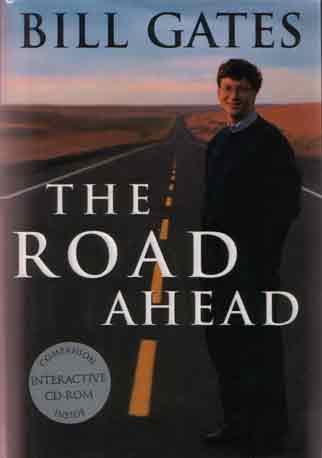
The Road Ahead
by
Bill Gates
,
Nathan Myhrvold
and
Peter Rinearson
Published 15 Nov 1995
Such meetings will become very popular because they save time and money and are often more productive than audio-only phone conferences or even face-to-face meetings, because people seem to be more attentive if they know they are on-camera. I've noticed that it does take some getting used to, though. If one person is on a videoconference screen, he or she tends to get much more attention than others in the meeting. I first noticed this when a bunch of us in Seattle were videoconferencing with Steve Ballmer, who was in Europe. It was as if we were all glued to The Steve Ballmer Show. If Steve took off his shoes, we'd all look at each other's reactions. When the meeting was over I could have told you all about Steve's new haircut but I might not have been able to name the other people who'd been in the room with me. I think this distortion will go away as videoconferences become commonplace.
…
For everything from conception to marketing, and lots of stops along the way, thanks to Jonathan Lazarus and his team: Kelli Jerome, Mary Engstrom, Wendy Langen, and Debbie Walker. Without Jonathan's guidance and persistence this book never would have happened. For their helpful suggestions throughout the project, special thanks to Tren Griffin, Roger McNamee, Melissa Waggener, and Ann Winblad. For their incisive review comments, thanks to Stephen Arnold, Steve Ballmer, Harvey Berger, Paul Carroll, Mike Delman, Kimberly Ellwanger, Brian Fleming, Bill Gates, Sr., Melinda Gates, Bernie Gifford, Bob Gomulkiewicz, Meg Greenfield, Collins Hemingway, Jack Hitt, Rita Jacobs, Erik Lacitis, Mich Matthews, Scott Miller, Craig Mundie, Rick Rashid, Jon Shirley, Mike Timpane, Wendy Wolf, Min Yee, and Mark Zbikowski.
…
I got pretty good at this kind of information processing. The experience of poker strategizing—and the money—were helpful when I got into business, but the other game I was playing, the postponing one, didn't serve me well at all. But I didn't know that then. In fact, I was encouraged that my dilatory practices were shared by a new friend, Steve Ballmer, a math major whom I met freshman year, when we lived in the same student dorm, Currier House. Steve and I led very different lives, but we were both trying to pare down to the minimum the course time needed to get top grades. Steve is a man of endless energy, effortlessly social. His activities took a lot of his time.
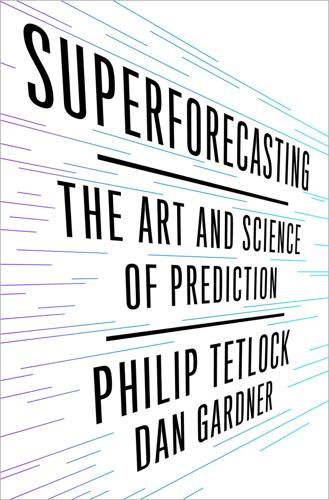
Superforecasting: The Art and Science of Prediction
by
Philip Tetlock
and
Dan Gardner
Published 14 Sep 2015
It is a tablespoon of doubt. 3 Keeping Score When physicians finally learned to doubt themselves, they turned to randomized controlled trials to scientifically test which treatments work. Bringing the rigor of measurement to forecasting might seem easiesr to do: collect forecasts, judge their accuracy, add the numbers. That’s it. In no time, we’ll know how good Tom Friedman really is. But it’s not nearly so simple. Consider a forecast Steve Ballmer made in 2007, when he was CEO of Microsoft: “There’s no chance that the iPhone is going to get any significant market share. No chance.” Ballmer’s forecast is infamous. Google “Ballmer” and “worst tech predictions”—or “Bing” it, as Ballmer would prefer—and you will see it enshrined in the forecasting hall of shame, along with such classics as the president of Digital Equipment Corporation declaring in 1977 that “there is no reason anyone would want a computer in their home.”
…
But still there is ambiguity: how much more than 2% or 3% of the global mobile phone market would the iPhone have to capture to be deemed “significant”? Ballmer didn’t say. And how much money was he talking about when he said Apple could earn “a lot of money”? Again, he didn’t say. So how wrong was Steve Ballmer’s forecast? His tone was brash and dismissive. In the USA Today interview, he seems to scoff at Apple. But his words were more nuanced than his tone, and too ambiguous for us to declare with certainty that his forecast was wrong—much less so spectacularly wrong it belongs in the forecasting hall of shame.
…
With no time frame, there is no way to resolve these arguments to everyone’s satisfaction—especially when reputations are on the line. This problem alone renders many everyday forecasts untestable. Similarly, forecasts often rely on implicit understandings of key terms rather than explicit definitions—like “significant market share” in Steve Ballmer’s forecast. This sort of vague verbiage is more the rule than the exception. And it too renders forecasts untestable. These are among the smaller obstacles to judging forecasts. Probability is a much bigger one. Some forecasts are easy to judge because they claim unequivocally that something will or won’t happen, as in Jonathan Schell’s forecast for nuclear war.

Dogfight: How Apple and Google Went to War and Started a Revolution
by
Fred Vogelstein
Published 12 Nov 2013
Back then, Microsoft and Google were in the midst of a nasty battle of their own for dominance in search, and for top dog in the tech world. After two decades of being the first-choice workplace of top engineering talent, Microsoft was now losing many of those battles to Google. Chairman Bill Gates and CEO Steve Ballmer had made it clear they took Google’s challenge personally. Gates seemed particularly affected by it. Once or twice he made fun of the way Page and his Google cofounder Sergey Brin dressed. He said their search engine’s popularity was “a fad.” Then, in the same breath, he would issue the ultimate compliment, saying that of all his competitors over the years, Google was the most like Microsoft.
…
Its memory and the virtual keyboard, already one of its most controversial features, still didn’t work right. Touching the letter e—the most frequently used letter in the alphabet—often caused other letters to pop up around the keyboard. Instead of appearing instantly after being “typed,” letters would emerge after annoying lags. Microsoft CEO Steve Ballmer had been among the many declaring the iPhone a failed product because it didn’t have a physical keyboard. Apple executives were worried too. They weren’t comfortable using the keyboard either. “Everyone was concerned about touching on something that doesn’t have any physical feedback,” one of the executives said.
…
So, while Brin, Page, and Schmidt were pushing the Android team hard, they were also beefing up the Google iPhone team. Most notably, they put Vic Gundotra, a newly hired but well-known executive from Microsoft, in charge of running it. Gundotra, who was thirty-seven, had spent his entire career working for Bill Gates and Steve Ballmer, becoming their point person for the company’s relationship with all external Windows software developers—tens of thousands of geeks worldwide. Gundotra was well-known for his technical acumen, his near-Steve-Jobs-quality presentations, and his willingness to take risks and be controversial. Microsoft’s incredible growth and dominance during the 1990s was in no small part the result of his tireless evangelism, convincing legions of programmers worldwide to write software for Windows when few thought it would succeed.

The Innovation Illusion: How So Little Is Created by So Many Working So Hard
by
Fredrik Erixon
and
Bjorn Weigel
Published 3 Oct 2016
Xie, Ye, “Goldman’s BRIC Era Ends as Fund Folds after Years of Losses.” Bloomberg, Nov. 8, 2015. At http://www.bloomberg.com/news/articles/2015-11-08/goldman-s-bric-era-ends-as-fund-closes-after-years-of-losses. Yarow, Jay, “Here’s What Steve Ballmer Thought about the iPhone Five Years Ago.” Business Insider, June 29, 2012. At http://www.businessinsider.com/heres-what-steve-ballmer-thought-about-the-iphone-five-years-ago-2012-6?IR=T. Zenger, Todd R., Teppo Felin, and Lyda Bigelow, “Theories of the Firm–Market Boundary.” Academy of Management Annals, 5.1 (2011): 89–133. Zhou, Yue Maggie, “Coordination Costs, Organization Structure and Firm Growth.”
…
Many in the tech analyst community would say it prevented Microsoft from quickly seizing most of the defining trends in the past decade of ICT growth. Like many other firms, Microsoft had a clear (and, as it turned out, prescient) idea of how markets and products would evolve. In 2000, at the height of its antitrust problems in the United States, Microsoft explained what the future of computer software and hardware would look like. Steve Ballmer, the then newly minted heir to Bill Gates, described how Microsoft would create a “unified platform through which devices and services co-operate with each other.”7 Microsoft predicted the need for interconnected web services that could be used across platforms and shared between colleagues or family members.
…
While other innovators deserted the operating system, Microsoft was too afraid of destroying the value of Windows by launching stand-alone products that worked in other ecosystems. It believed in a future based on a Windows-controlled ecosystem for all devices and services – one ring to rule them all.8 This philosophy helped shape a corporate culture that grew arrogant and missed many of the developments in the market. Steve Ballmer’s colorful speech just after the launch of the iPhone in 2007 is indicative of the culture that permeated Microsoft: There’s no chance that the iPhone is going to get any significant market share. No chance. It’s a $500 subsidized item. They may make a lot of money. But if you actually take a look at the 1.3 billion phones that get sold, I’d prefer to have our software in 60% or 70% or 80% of them, than I would to have 2% or 3%, which is what Apple might get.9 Six years after Ballmer’s prediction, only 3 percent of new mobile phones used Microsoft’s operating system while Apple’s iOS had close to 50 percent of the market.
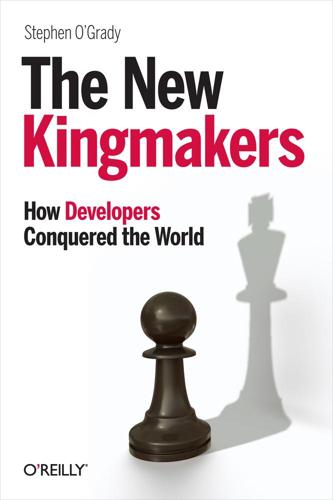
The New Kingmakers
by
Stephen O'Grady
Published 14 Mar 2013
Microsoft In a May 2001 address at the Stern School of Business entitled “The Commercial Software Model,” Microsoft Senior Vice President Craig Mundie said that the Gnu Public License (GPL)—the license that governs the Linux kernel, among other projects—posed “a threat to the intellectual property of any organization making use of it.” A month later, in an interview with the Chicago Sun-Times, Microsoft CEO Steve Ballmer characterized Linux as a “cancer that attaches itself in an intellectual property sense to everything it touches.” Six years later, Ballmer and Microsoft were on the offensive, alleging in an interview with Fortune that the Linux kernel violates 42 Microsoft patents. In 2009, Microsoft, calling it “the community’s preferred license,” released 20,000 lines of code under the GPL, intended for inclusion into the Linux kernel.
…
On the cloud, developers can employ Microsoft’s .NET stack or erstwhile competitors like Java, JavaScript, or PHP, and build software in the open source Eclipse development environment. And since 2008, Microsoft has been a sponsor of the Apache Software Foundation, an open source governance non-profit. In other words, the once-dominant Microsoft is adjusting to the shifting landscape; one in which the developers, not the vendors, are in charge. Steve Ballmer, famous for jumping up and down on a stage screaming, “DEVELOPERS! DEVELOPERS! DEVELOPERS!” finally seems to be putting them front and center with the company’s strategy. Netflix In an interview with Fortune in 2007, Netflix CEO Reed Hastings summed up his company’s future simply, saying “We named the company Netflix for a reason; we didn’t name it DVDs-by-mail.
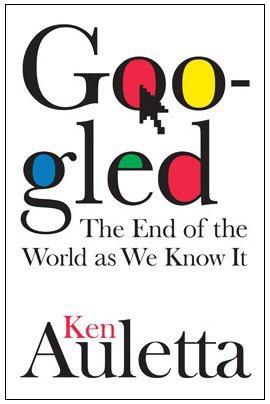
Googled: The End of the World as We Know It
by
Ken Auletta
Published 1 Jan 2009
“If that works,” he told me, “it will seem like the birth of the CBS network in 1927.” Because YouTube was making no money, there was a fair amount of sneering from media executives. Like Napster, they said YouTube would be hobbled by copyright lawsuits and would be unable to monetize its enormous traffic. “Right now,” Microsoft CEO Steve Ballmer declared, “there’s no business model for YouTube that would justify $1.6 billion. And what about the rights holders? At the end of the day, a lot of the content that’s up there is owned by somebody else.” That “somebody else,” the broadcast and cable networks believed, was them. YouTube, they asserted, built its success on their backs; thirteen of the twenty most popular videos on the site, the Wall Street Journal reported in early 2007, were professionally made, not user generated.
…
If you didn’t have Moore’s law, you wouldn’t have that advancement. It’s actually causal in another way.” The management pressure to double performance helps assure it. IN SPITE OF GOOGLE’S RAPID GROWTH, or because of it, by 2007 the company had become a target for lawsuits and sneers. Leading the chorus was Microsoft CEO Steve Ballmer. In 2007, he had labeled Google “a one-trick pony,” and had derided the company at nearly every public opportunity since, telling reporters, “they have one product that makes all their money, and it hasn’t changed in five years.... Search makes ninety-eight percent of all their money.” Irwin Gotlieb, who is not in Ballmer’s adversarial camp, nevertheless shared the view that Google’s attempt to broaden its reach had been a failure.
…
Google’s revenues had surged 42 percent compared to the first quarter of 2007; its profits had jumped 30 percent, and as Varian had suggested, its ad clicks had risen 20 percent. “Google Inc’s Go-Go Era Apparently Isn’t Over,” said a report in the Wall Street Journal. The Times headline was: “Google Defies the Economy and Reports a Profit Surge.” As the report showed, Google hogged three quarters of all U.S. search advertising dollars, compared to only 5 percent for Steve Ballmer’s Microsoft. Yet Ballmer had a point. Google had not figured out how to make money on its surfeit of products. YouTube accounted for one of every three videos viewed online, three billion of the nine billion viewed in January 2008. The impact of this new medium would forever change the way politics are conducted.
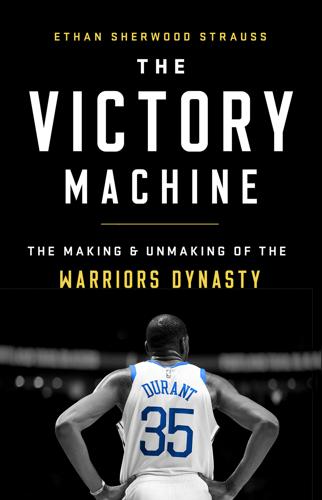
The Victory Machine: The Making and Unmaking of the Warriors Dynasty
by
Ethan Sherwood Strauss
Published 13 Apr 2020
The Clippers were an ambitious operation, run by big-spirited macher Steve Ballmer. The former Microsoft CEO is a broad-shouldered six foot five, with a friar’s balding pattern and large hands. He doesn’t walk about the premises so much as he struts, his head jutted forward at all times. As his leaning dome bobs his large nose forward, he looks a little like if you stuffed a giant bald eagle into a collared shirt. This is an excellent look for a CEO, if slightly terrifying. A sizeable, aggressive balding man is the Fortune 500 prototype. Steve Ballmer’s vigor is well chronicled. There’s a YouTube clip titled “Steve Ballmer Going Crazy on Stage,” wherein the billionaire jumps around, yelping to the point of accreting massive pit stains.

The Innovators: How a Group of Inventors, Hackers, Geniuses and Geeks Created the Digital Revolution
by
Walter Isaacson
Published 6 Oct 2014
IBM corporate history, “The Birth of the IBM PC,” http://www-03.ibm.com/ibm/history/exhibits/pc25/pc25_birth.html. 90. Manes and Andrews, Gates, 3629. 91. Manes and Andrews, Gates, 3642; Steve Ballmer interview, “Triumph of the Nerds,” part II, PBS, June 1996. See also James Chposky and Ted Leonsis, Blue Magic (Facts on File, 1988), chapter 9. 92. Bill Gates and Paul Allen interview, by Brent Schlender, Fortune, Oct. 2, 1995. 93. Steve Ballmer interview, “Triumph of the Nerds,” part II, PBS, June 1996. 94. Jack Sams interview, “Triumph of the Nerds,” part II, PBS, June 1996. See also Steve Hamm and Jay Greene, “The Man Who Could Have Been Bill Gates,” Business Week, Oct. 24, 2004. 95.
…
“He was getting some costly lessons in bluffing,” said Allen. “He’d win three hundred dollars one night and lose six hundred the next. As Bill dropped thousands that fall, he kept telling me, ‘I’m getting better.’ ”53 In a graduate-level economics class, he met a student who lived down the hall of his dorm. Steve Ballmer was very different from Gates on the surface. Big, boisterous, and gregarious, he was the type of campus activity junkie who liked to join or lead multiple organizations. He was in the Hasty Pudding Club, which wrote and produced musical theater shows, and served with a cheerleader’s enthusiasm as manager of the football team.
…
So on July 21, 1980, he placed a call to Bill Gates and asked to see him right away. When Gates invited him to fly to Seattle the following week, Sams replied that he was already heading for the airport and wanted to see Gates the next day. Sensing a big fish hungry to be hooked, Gates was thrilled. A few weeks earlier, Gates had recruited his Harvard dorm mate Steve Ballmer to Microsoft as the business manager, and he asked Ballmer to join him at the IBM meeting. “You’re the only other guy here who can wear a suit,” Gates pointed out.91 When Sams arrived, Gates was also wearing a suit, but he did not quite fill it. “This young fellow came out to take us back, and I thought he was the office boy,” recalled Sams, who was dressed in the IBM standard blue suit and white shirt.
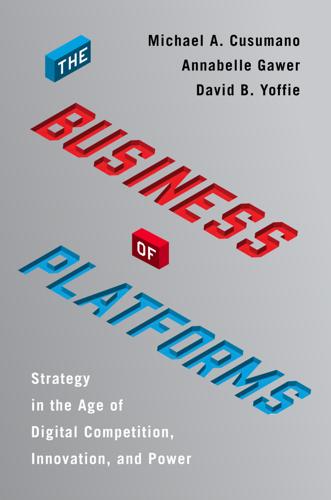
The Business of Platforms: Strategy in the Age of Digital Competition, Innovation, and Power
by
Michael A. Cusumano
,
Annabelle Gawer
and
David B. Yoffie
Published 6 May 2019
With over 80 percent of the worldwide market in 2018, Android was clearly the dominant smartphone platform. The smartphone OS game became a two horse race, with other platforms—including Microsoft’s—consigned to irrelevance. The combined impact of the iPhone and the emergence of Android was to usher in a radically new phase in the evolution of mobile phones. Microsoft was caught flat-footed. Steve Ballmer famously gave an interview a few months after the release of the iPhone, saying, “There’s no chance that the iPhone is going to get any significant market share. No chance.”56 Not perceiving a serious threat, Microsoft took three full years to release its rebooted Windows Phone 7, its first attempt to move into the post-iPhone world of touch-screen‒centric user interfaces for smartphones.
…
Complacency, even among successful platform companies, can indeed breed failure—which Microsoft proved in the browser market during the 2000s, after it beat Netscape in the 1990s. If you cannot stay competitive, no market position is safe. A senior executive from Google even told us that he’d like to “erect a statute to Steve Ballmer” for performing so poorly in browsers and smartphones. Traditional non-platform firms have an especially difficult challenge in the digital age. But even they should not simply give in to new platform competitors. How old dogs can learn new tricks—a challenge that is difficult but possible—is the subject of the next chapter.
…
In terms of page views, Chrome has a huge lead, with over 60 percent share, while Firefox and IE battled for second place, with 15.7 percent and 13.7 percent, respectively. 52.Steven Levy, “Inside Chrome: The Secret Project to Crush IE and Remake the Web,” Wired, September 2, 2008. 53.Megan Geuss, “Which Browser Should You Use?” PCWorld, February 26, 2012. 54.Ann Bednarz, “Browser Wars,” Network World, November 2, 2011. 55.All quoted in “Google Cell Platform No Threat, Rivals Say: Move Seen to Give Search Engine Leg Up on Mobile Advertising,” Ottawa Citizen, November 6, 2007. 56.Jay Yarow, “Here’s What Steve Ballmer Thought About the iPhone Five Years Ago,” Business Insider, June 29, 2012. 57.Peter Bright, “Windows Phone 7: The Ars Review,” ArsTechnica, October 22, 2010. 58.Sascha Segan, “Microsoft’s Windows Phone 7 OS,” PCMag, October 20, 2010. 59.Joshua Topolsky, “Windows Phone 7 Review,” Engadget, October 20, 2010. 60.Dieter Bohn and Chris Ziegler, “Windows Phone 8 review,” Verge, October 29, 2012. 61.Bright, “Windows Phone 7.” 62.See Sam Oliver, “Nokia Ditches Symbian, Embraces Microsoft Windows Phone for New Handsets,” AppleInsider, February 11, 2011. 63.Pete Cunningham, quoted in Kevin J.
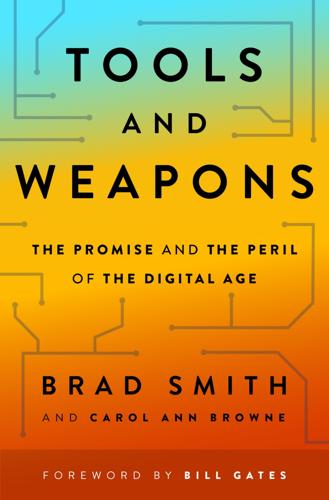
Tools and Weapons: The Promise and the Peril of the Digital Age
by
Brad Smith
and
Carol Ann Browne
Published 9 Sep 2019
Software development inherently involves choices between features, given the finite availability of engineering resources that can be applied on a feasible timeline. This encryption work required them to delay the development of other product features that customers were asking us to add. After some animated discussion, CEO Steve Ballmer and our senior leadership team made the decision to press forward quickly on the encryption front. Every other tech company did the same thing. That November, as these events were unfolding, President Barack Obama visited Seattle. He was attending a political fund-raiser, and the White House had invited a small group of area leaders and supporters to have a cocktail in a private suite at the Westin Seattle hotel after the formal event.
…
Our litigation team had hammered out an agreement in principle to settle what we knew would be the single biggest class-action lawsuit to result from our antitrust loss before the federal court of appeals in Washington, DC. It covered all the consumers in California. The price tag was a whopping $1.1 billion. It would be the largest litigation settlement in Microsoft’s history. I sent Steve Ballmer, then Microsoft’s CEO, an email to let him know that I wanted to move forward, and I held my breath waiting for his reaction. Steve walked down the hall and into my office on that same morning to talk about the proposed settlement. He understood, as almost all business executives do, that the lawyers who bring class action lawsuits always ensure that they do well for themselves as part of these settlements.
…
A special thanks goes to Microsoft graphic designers Mary Feil-Jacobs and Zach LaMance, for moonlighting on the book’s cover art. We’re also indebted enormously to the many colleagues, peers, and friends inside and outside Microsoft who played vital roles in the events that are captured in the book. This starts with the extraordinary trio of Bill Gates, Steve Ballmer, and Satya Nadella, the three individuals who have served as CEO of a company that has had a truly remarkable history. Very few people have had the opportunity to work closely with all three. Each is different from the other, but they share the broad curiosity and passionate pursuit of excellence that it takes to truly make a difference in the world.
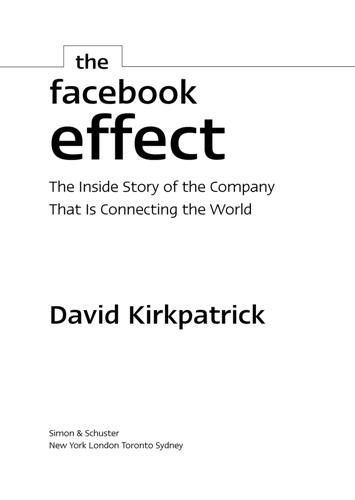
The Facebook Effect
by
David Kirkpatrick
Published 19 Nov 2010
As part of this effort, it was investing billions of dollars to improve its own online search software. Separately, it had in May made its biggest purchase ever—paying $6 billion for aQuantive, which distributed advertising across the Internet. Now that it owned this distribution engine, it badly needed additional inventory to sell through it. Microsoft CEO Steve Ballmer was fed up with losing deals to Google. He had recently lost both of the industry’s two biggest partnership opportunities after coming exquisitely close to agreement. Each time, Google swooped in at the last minute and stole the deal away. Ballmer had flown to New York in December 2005 to negotiate a major ad partnership with Time Warner’s AOL.
…
It seemed to them he might be seeking specific promises from Google in order to strong-arm Microsoft to concede the same points. For all the talk, the Google team knew that Microsoft’s prior relationship with Facebook gave it a big advantage. The chances of pulling Facebook away remained small. Microsoft had been carefully cultivating Zuckerberg. CEO Steve Ballmer had flown to Palo Alto to visit his young counterpart twice. Ray Ozzie, Microsoft’s Chief Software Architect, had also repeatedly visited Palo Alto. As Zuckerberg is wont to do, he took them on long walks. He told Ballmer that Facebook was raising money at a $15 billion valuation. But Ballmer had come with something very specific in mind.
…
The Los Angeles Times called the $15 billion figure “staggering.” “It tips the scales in terms of totally ridiculous valuations,” wrote the influential TechDirt blog. This was by far the highest valuation ever given to a private technology company, and one with no profits to boot! Either Microsoft’s Steve Ballmer was insane, or Facebook mattered more than anyone had realized. But if the f8 platform event five months earlier had firmly put Facebook once and for all onto the technology industry map, this investment did the same thing for Facebook on Wall Street. Microsoft’s stock jumped markedly. The ad deal that precipitated the investment was barely noticed in the hubbub over the valuation.

Amazon Unbound: Jeff Bezos and the Invention of a Global Empire
by
Brad Stone
Published 10 May 2021
But Amazon would remain grossly unprofitable in India for the foreseeable future, and its intense competition with Flipkart had created a disorienting set of social and economic discontinuities that helped to summon the dogs of nationalism and divisive populism. The entire saga was a preview of the political headaches that were waiting for Bezos back home. CHAPTER 4 A Year for Eating Crow In October 2014, a few weeks after Jeff Bezos returned from his first trip to India, former Microsoft CEO Steve Ballmer appeared on the talk show Charlie Rose and threw serious shade at his company’s crosstown rival. “I don’t know what to say about Amazon. I like Amazon. Nice company. [But] they make no money, Charlie! In my world, you’re not a real business until you make some money.” Amazon’s performance at the time seemed to merit Ballmer’s assessment.
…
That August, an explosive newspaper article in the New York Times turned Amazon’s combative corporate culture into the subject of national attention. Over the course of that eventful year, 2015, Amazon stock more than doubled. Because he owned about 18 percent of the company, Bezos was vaulted into the ranks of the top five wealthiest people in the world, according to Bloomberg’s Billionaire’s Index. It turned out that Steve Ballmer’s broadside against Amazon was a perfect contrarian indicator; it would mark almost precisely the start of one of the most dramatic increases in corporate value and personal wealth in the entire history of capitalism. * * * Of course, Ballmer had little grasp of how Amazon’s eventual engine of profitability, Amazon Web Services, was performing—and that was how Jeff Bezos wanted it.
…
” * * * By the end of 2015, there was little doubt left about Amazon’s ascendance. The company posted its third consecutive quarterly profit, along with 69 percent growth in sales at Andy Jassy’s booming AWS division. Amazon’s market capitalization had doubled in the span of a year and stood at $315 billion. For Steve Ballmer and the other skeptics, it was a year for eating crow. At the same time, Amazon became the fastest company in history to surpass $100 billion in annual sales, meeting a long-standing goal of Bezos and the S-team. In his annual letter to investors the following April, Bezos trumpeted that benchmark and tried to get in the final word in the debate over Amazon’s culture.

The Code: Silicon Valley and the Remaking of America
by
Margaret O'Mara
Published 8 Jul 2019
He wasn’t surprised that IBM was coming to call—his software was becoming the global standard, after all—but he was excited about the possibilities of scale that a partnership with Big Blue might bring. Only a few weeks earlier, he’d persuaded a friend of his from Harvard, an exuberant Detroiter named Steve Ballmer, to drop out of Stanford’s MBA program and take on some of the operational duties of his growing company. Microsoft was a land of sweatshirts and rumpled khakis; Ballmer was, as Gates put it, “a good suit-type guy.” Gates asked his more presentable colleague to join him at the table for the IBM pitch.3 Ballmer may have had the suit, but Gates ruled the room.
…
Microsoft didn’t have its own Washington lobbying office until 1995, when the original antitrust investigation left it operating under a consent decree.3 Anyway, Bill Gates was too busy sparring with Silicon Valley to pay much attention to D.C. Despite the lovable-geek image so carefully cultivated by his PR team, Bill Gates remained the most competitive person on the planet when it came to matters involving his company. Steve Ballmer came in at number two. “At Microsoft,” marketing chief Jean Richardson remembered, “the whole idea was that we would put people under.” Their scorched-earth dominance of the software market had left competitors whimpering and dissuaded new entrants, contributing to Silicon Valley’s wholehearted embrace of the Internet in the first place.
…
Where the word processing programs and spreadsheets and everything else lived in the cloud, downloadable at a click of a button. Where desktop PCs and closet-sized server rooms gave way to enormous, energy-gobbling server farms processing terabyte upon terabyte of data. Where new companies using these models would disrupt the software money machine that Bill Gates and Steve Ballmer had presided over for two decades, derailing its business far more than any antitrust action ever could. THE GATES COMPUTER SCIENCE BUILDING Forty years since his fateful tour of duty at Shockley Semiconductor, Jim Gibbons was taking his victory lap. He’d remained at Stanford his entire career, rising through the faculty ranks to become Dean of Engineering.
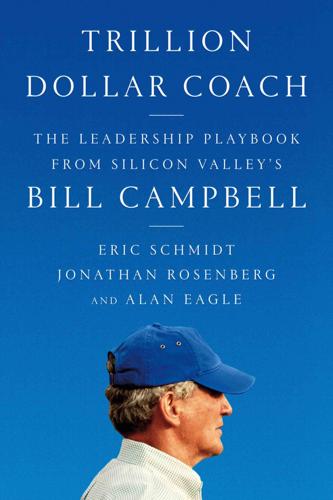
Trillion Dollar Coach: The Leadership Playbook of Silicon Valley's Bill Campbell
by
Eric Schmidt
,
Jonathan Rosenberg
and
Alan Eagle
Published 15 Apr 2019
The ones who see things differently—and will stare you down until you do, too. They’re not fond of rules, especially those outlined by the human resources department on ‘treating your employees with respect.’” The article went on to list the most notorious of the tech industry’s villains: Steve Jobs, Steve Ballmer, Bill Gates, Marc Benioff, and there, second to last, the only Google representative on the list, our own Jonathan Rosenberg. Jonathan was ebullient. He was on a top-ten list featuring the biggest stars of the industry, a hard-ass hall of fame if there ever was one! A few days later, when he walked into his 1:1 with Bill, a printed copy of the article lay on the conference table.
…
Everyone agreed that they were correct, since they had been foundational for the company for a long time. The decision practically made itself. The meeting concluded in less than an hour, and the deal was off.* Mike applied the same approach when he was negotiating the sale of Tellme to Microsoft in 2007. He was working directly with Steve Ballmer, the CEO of Microsoft at the time, and at one point the deal was on the verge of collapse because another company came in with an unsolicited offer that was higher than Microsoft’s. Mike talked to Bill, thought through the company’s first principles again, and realized that Microsoft was the best home for Tellme.
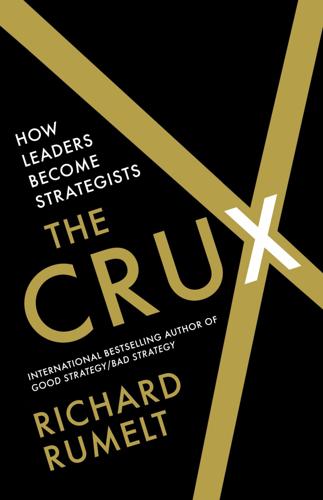
The Crux
by
Richard Rumelt
Published 27 Apr 2022
It is tempting to say that Microsoft would have done better had it concentrated on just one of these challenges. Then CEO Steve Ballmer recalled that “I put the A-team resources on Longhorn [Vista], not on phones or browsers. All of our resources were tied up on the wrong thing.”3 But, as many Microsoft employees have reported, there was a deeper challenge: a politicized internal culture combined with low skill at integrating newly acquired talent. Key creative talent abandoned the company. It is clear, in retrospect, that neither Bill Gates nor Steve Ballmer was capable of honestly diagnosing or dealing with this crux challenge. THE ASC I call what passes the joint filters of critical importance and addressability an ASC (addressable strategic challenge).
…
When Apple introduced the iPhone in 2007, a number of industry experts predicted that it would not be a success. It would, they predicted, be a niche product, just like Apple’s Macintosh PC, and, due to strong price competition, be profitless. This conviction rested on making an analogy between the smartphone business and the older PC business. Microsoft CEO Steve Ballmer said: There’s no chance that the iPhone is going to get any significant market share. No chance. It’s a $500 subsidized item. They may make a lot of money. But if you actually take a look at the 1.3 billion phones that get sold, I’d prefer to have our software in 60 percent or 70 percent or 80 percent of them, than I would to have 2 percent or 3 percent, which is what Apple might get.4 John Dvorak was a much-followed columnist who specialized in technology.
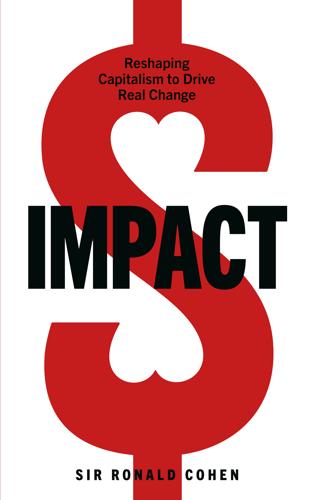
Impact: Reshaping Capitalism to Drive Real Change
by
Ronald Cohen
Published 1 Jul 2020
In a further indication of the increasing belief in SIBs, a successful £2.5 million ($3.3 million) pilot program helping people at risk of homelessness originally launched by central government was scaled up by Kirklees to a £23 million ($30.6 million) contract.16 In the US, Maycomb Capital, an impact investment manager co-founded by Goldman Sachs alumna, Andi Phillips, has launched the first American equivalent of the Bridges SIB Funds. The fund, which was launched in 2018, aims to raise a total of $50 million and includes Prudential Financial, the Kresge Foundation and Steve Ballmer, the former CEO of Microsoft, among its backers.17 One of Maycomb’s investments is in the Massachusetts Pathways to Economic Advancement SIB, which was launched in 2017 by Social Finance US to focus on integrating immigrants into society. The Greater Boston area is home to a significant refugee and immigrant population that has little or no English skills.
…
After five years and two cohorts of 1,000 prisoners each, the British government decided to refashion the Probation Office so as to reduce reoffending and the cost to the prison service, and changed the SIB model to a fee-for-service model. 7 https://www.brookings.edu/wp-content/uploads/2019/01/Global-Impact-Bonds-Snapshot-March-2020.pdf 8 Ibid. 9 Ibid. 10 https://www.bridgesfundmanagement.com/uks-first-social-impact-bond-fund-achieves-final-close-25m/ and www.bridgesfundmanagement.com/bridges-closes-second-social-outcomes-fund-at-extended-hard-cap-of-35m/ 11 https://www.bridgesfundmanagement.com/outcomes-contracts/ 12 https://www.bridgesfundmanagement.com/outcomes-contracts/ 13 A Newcastle University evaluation in the British Medical Journal showed improved well-being, and a publication from Newcastle and Gateshead Clinical Commissioning Group showed a reduction in costs. 14 https://golab.bsg.ox.ac.uk/knowledge-bank/project-database/fair-chance-fund-west-yorkshire-fusion-housing/ 15 https://www.youtube.com/watch?v=sJ-OfYW0hs&feature=youtu.be 16 https://www.kirkleesbetteroutcomespartnership.org/ 17 https://impactalpha.com/prudential-kresge-and-steve-ballmer-back-maycomb-capitals-pay-for-success-fund/ 18 https://www.livingcities.org/blog/1203-how-massachusetts-s-new-pfs-project-will-help-make-the-american-dream-a-reality 19 https://www.nytimes.com/2007/02/27/education/27esl.html and https://socialfinance.org/wp-content/uploads/MAPath 20 https://thewell.worlded.org/the-massachusetts-pathways-to-economic-advancement-pay-for-success-project/ 21 Social Finance US. 22 https://thewell.worlded.org/the-massachusetts-pathways-to-economic-advancement-pay-for-success-project/ 23 Ibid. 24 Brookings Institution Global Impact Bond Database,16 January 2020. 25 http://govinnovator.com/emily_gustaffson_wright/ 26 https://www.un.org/press/en/2019/dsgsm1340.doc.htm 27 http://instiglio.org/educategirlsdib/wp-content/uploads/2015/09/Educate-Girls-DIB-Sept-2015.pdf 28 http://www.instiglio.org/en/girls-education-india/ 29 https://www.brookings.edu/blog/education-plus-development/2018/07/13/worlds-first-development-impact-bond-for-education-shows-successful-achievement-of-outcomes-in-its-final-year/ 30 http://instiglio.org/educategirlsdib/wp-content/uploads/2018/07/Educate-Girls-DIB_results_brochure_final-2.pdf 31 Ibid. 32 https://www.brookings.edu/wp-content/uploads/2019/01/Global-Impact-Bonds-Snapshot-March-2020.pdf 33 https://www.brookings.edu/research/impact-bonds-in-developing-countries-early-learnings-from-the-field/ 34 https://www.devex.com/news/icrc-launches-world-s-first-humanitarian-impact-bond-90981 35 Learning Generation: Investing in education for a changing world, The Education Commission, 2017. 36 https://www.livemint.com/Education/XRdJDgsAbwnSAH8USzyCWM/11-million-development-impact-bonds-launched-to-improve-edu.html, https://www.brookings.edu/blog/education-plus-development/2018/09/25/a-landmark-month-for-impact-bonds-in-education/, https://indiaincgroup.com/prince-charles-backs-new-education-bond-india/ and https://www.britishasiantrust.org/our-impact/innovative-finance 37 https://www.socialfinance.org.uk/projects/liberia 38 Ibid. 39 In their book, Getting Beyond Better: How Social Entrepreneurship Works. 40 https://www.fordfoundation.org/ideas/equals-change-blog/posts/unleashing-the-power-of-endowments-the-next-great-challenge-for-philanthropy/ 41 https://www.rockefellerfoundation.org/our-work/initiatives/innovative-finance/ 42 https://obamawhitehouse.archives.gov/blog/2016/04/21/steps-catalyze-private-foundation-impact-investing 43 http://www.legislation.gov.uk/ukpga/2016/4/section/15/enacted 44 https://www.appositecapital.com/mission/ 45 https://www.gsttcharity.org.uk/who-we-are/our-finances/how-we-are-financed/our-endowment and https://www.gsttcharity.org.uk/what-we-do/our-strategy/other-assets/property-and-estates 46 Mission-Related Investment refers to the use of investments by foundations as tools to achieve their philanthropic goals. 47 http://www.fordfoundation.org/ideas/equals-change-blog/posts/unleashing-the-power-of-endowments-the-next-great-challenge-for-philanthropy/ 48 https://nonprofitquarterly.org/can-ford-foundations-1-billion-impact-investing-commitment-alter-field/ 49 https://www.fordfoundation.org/ideas/equals-change-blog/posts/unleashing-the-power-of-endowments-the-next-great-challenge-for-philanthropy/ 50 https://efc.umd.edu/assets/m2e/pri_final_report_8-05-13.pdf 51 https://www.fastcompany.com/40525515/how-the-ford-foundation-is-investing-in-change 52 Ibid. 53 https://ssir.org/articles/entry/eight_myths_of_us_philanthropy and http://data.foundationcenter.org/#/foundations/all/nationwide/top:assets/list/2015 54 https://www.fastcompany.com/40525515/how-the-ford-foundation-is-investing-in-change 55 https://www.packard.org/wp-content/uploads/2015/10/Packard_MIR_2015OCT51.pdf 56 https://mcconnellfoundation.ca/impact-investing/ 57 https://mustardseedmaze.vc/ 58 https://knowledge.wharton.upenn.edu/article/from-backstreet-to-wall-st-ep-09/ 59 http://www.blueorchard.com/sasakawa-peace-foundation-invest-blueorchards-flagship-fund/ 60 https://www.forbes.com/sites/annefield/2015/02/26/f-b-heron-foundation-is-going-all-in/#6d2f79386d2f 61 https://www.forbes.com/sites/annefield/2017/03/30/mission-accomplished-how-the-heron-foundation-went-all-in/#405717a04d17 62 Ibid. 63 https://nonprofitquarterly.org/nathan-cummings-no-longer-just-experimenting-impact-investing/ 64 https://www.top1000funds.com/2019/05/foundations-should-invest-for-impact/ 65 https://www.forbes.com/sites/laurengensler/2015/11/06/lisa-charly-kleissner-kl-felicitas-impact-investing/#3fa5c38138e7 66 https://toniic.com/t100-powered-ascent-report/ 67 Ibid. 68 http://www.toniic.com/100-impact-network/ 69 https://www.bridgespan.org/insights/library/remarkable-givers/profiles/pierre-omidyar/don%e2%80%99t-start-a-foundation-pierre-omidyar-ignores-e 70 Ibid. 71 Ibid. 72 https://www.omidyar.com/financials – The total amount committed since inception is $1.53 billion+.
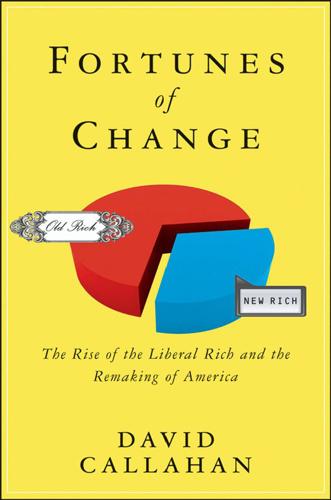
Fortunes of Change: The Rise of the Liberal Rich and the Remaking of America
by
David Callahan
Published 9 Aug 2010
The William Flora Hewlett Foundation is now among the top c08.indd 193 5/11/10 6:24:56 AM 194 fortunes of change five foundations in the United States and supports a wide array of progressive organizations. Steve Jobs isn’t alone in his lack of philanthropy. Amazon’s Jeff Bezos hasn’t gotten around to giving away large chunks of his wealth, either. Nor has Larry Ellison of Oracle, the third-richest man in the United States, or Microsoft’s Steve Ballmer, who was worth $14.5 billion in 2010. Inevitably, though, these and other giant tech fortunes will one day be harnessed to some kind of public purpose, as they are too big to be disposed of privately. Only then will we have a full picture of how the technology sector’s vast new wealth is likely to affect the United States and the world.
…
Although the United States seems at the end of its second Gilded Age, we are still at the beginning of a golden era of philanthropy that taps the wealth created during this period. Some of today’s largest new fortunes have barely been touched for charitable or political causes—like the money of the Google Guys ($17.5 billion each in 2010), or the great wealth of people such as Steve Ballmer ($14.5 billion), Jeff Bezos ($12.3 billion), Abigail Johnson ($11.5 billion), James Simons ($8.5 billion), Steven Cohen ($6.4 billion), and on and on. By the time many of these people do get around to large-scale charity, their fortunes will likely be even bigger than they are today. Together, the Forbes 400 had a net worth of $1.5 trillion in 2008, a number that fell sharply after the crash but is now rebounding and will continue to go up as time goes on.
…
A hedge fund manager who was a major Obama fund-raiser, speaking anonymously to a reporter, said, “I’m appalled at the anti–Wall Street rhetoric. It was okay on the campaign, but now it’s the real world. I’m surprised that Obama is turning out to be so left-wing. He’s a real class warrior.”2 Microsoft’s Steve Ballmer, who along with his wife contributed $100,000 to Obama’s inauguration committee, was openly critical of Obama’s offshore crackdown, a proposal that also reportedly angered Google’s high command and other Democratic donors in the tech world. This discontent cannot be ignored by the White House.
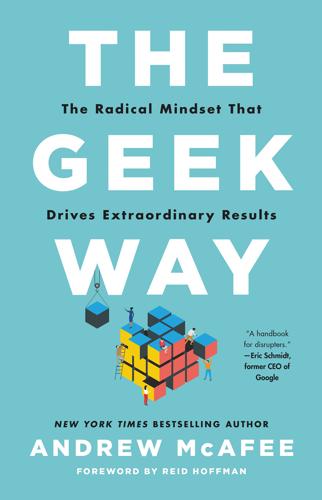
The Geek Way: The Radical Mindset That Drives Extraordinary Results
by
Andrew McAfee
Published 14 Nov 2023
,” InsideEVs, January 10, 2022, https://insideevs.com/news/559836/tesla-ota-updates-revealed-explained/. 16 more substantial changes: Bianca H., “A Timeline of All Software Updates: Tesla Model 3 Fleet,” Movia News, January 21, 2021, https://movia.news/software-updates-model-3/. 17 Failure rates have held steady: Herb Krasner, “New Research: The Cost of Poor Software Quality in the US: A 2020 Report,” CISQ, Consortium for Information and Software Quality, accessed February 15, 2023, http://it-cisq.org/pdf/CPSQ-2020-report.pdf. 18 “all but impossible”: Ralph Vartabedian, “Years of Delays, Billions in Overruns: The Dismal History of Big Infrastructure,” New York Times, November 28, 2021, www.nytimes.com/2021/11/28/us/infrastructure-megaprojects.html. 19 “Overly optimistic forecasts”: Daniel Kahneman, Thinking, Fast and Slow (New York: Farrar, Straus and Giroux, 2011), 250. 20 talked to more than a dozen former employees: Mikko-Pekka Heikkinen, “Knock, Knock, Nokia’s Heavy Fall,” Dominies Communicate (blog), February 15, 2016, https://dominiescommunicate.wordpress.com/2016/02/15/knock-knock-nokias-heavy-fall/amp/. 21 When work began: Kurt Eichenwald, “How Microsoft Lost Its Mojo: Steve Ballmer and Corporate America’s Most Spectacular Decline,” Vanity Fair, July 24, 2012, www.vanityfair.com/news/business/2012/08/microsoft-lost-mojo-steve-ballmer. 22 “this is the best Microsoft could do”: Don Tynan, “The 15 Biggest Tech Disappointments of 2007,” PCWorld, December 16, 2007, https://web.archive.org/web/20071219030508/www.pcworld.com/printable/article/id,140583/printable.html. 23 a few frank paragraphs: Willie Brown, “When Warriors Travel to China, Ed Lee Will Follow,” San Francisco Chronicle, July 27, 2013, www.sfgate.com/bayarea/williesworld/article/When-Warriors-travel-to-China-Ed-Lee-will-follow-4691101.php. 24 initial budget for the Transbay Terminal: Joshua Sabatini, “SF to Bail Out Transbay Project After Costs Nearly Double,” San Francisco Examiner, April 28, 2016, www.sfexaminer.com/news/sf-to-bail-out-transbay-project-after-costs-nearly-double/article_15e626fd-3b00-5cb1-878b-11ccd09b1e8a.html. 25 workers found structural flaws: Phil Matier and Andy Ross, “Transbay Transit Center Closed After Crack Found in Steel Beam,” San Francisco Chronicle, September 25, 2018. 26 so many big projects are completed late: David N.
…
Department of Justice, accessed March 1, 2023, www.justice.gov/sites/default/files/atr/legacy/2006/03/03/20.pdf. 37 almost $620 billion: Ashleigh Macro, “Apple Beats Microsoft as Most Valuable Public Company in History,” Macworld, August 21, 2012, www.macworld.com/article/669851/apple-beats-microsoft-as-most-valuable-public-company-in-history.html. 38 spent well over $80 billion: Lionel Sujay Vailshery, “Microsoft’s Expenditure on Research and Development from 2002 to 2022,” Statista, July 28, 2022, www.statista.com/statistics/267806/expenditure-on-research-and-development-by-the-microsoft-corporation/. 39 2012 Vanity Fair article: Kurt Eichenwald, “Microsoft’s Lost Decade,” Vanity Fair, July 24, 2012, www.vanityfair.com/news/business/2012/08/microsoft-lost-mojo-steve-ballmer. 40 “The developer concluded”: Eichenwald, “Microsoft’s Lost Decade.” 41 “People realized”: Eichenwald, “Microsoft’s Lost Decade.” 42 “Marc Turkel”: Eichenwald, “Microsoft’s Lost Decade.” 43 In 2011 Microsoft made its bad situation: Stephen Miller, “‘Stack Ranking’ Ends at Microsoft, Generating Heated Debate,” SHRM, November 20, 2013, www.shrm.org/resourcesandtools/hr-topics/compensation/pages/stack-ranking-microsoft.aspx. 44 “every current and former”: Eichenwald, “Microsoft’s Lost Decade.” 45 Microsoft engineer Brian Cody: Eichenwald, “Microsoft’s Lost Decade.” 46 “People responsible for features”: Eichenwald, “Microsoft’s Lost Decade.” 47 “people planned their days”: Eichenwald, “Microsoft’s Lost Decade.” 48 “Whenever I had a question”: Eichenwald, “Microsoft’s Lost Decade.” 49 “I wanted to build a team”: Eichenwald, “Microsoft’s Lost Decade.” 50 full-blown stampedes: Sky News Australia, “Stunning Toilet Paper Feeding Frenzy Caught on Camera,” YouTube video, March 10, 2020, https://youtu.be/df6K9qMr67w. 51 Amazon and other sites clamped down on it: Mary Jo Daley and Tom Killion, “Amazon Is Playing Whack-a-Mole with Coronavirus Price Gouging, and It’s Harming Pennsylvanians,” Philadelphia Inquirer, April 13, 2020, www.inquirer.com/opinion/commentary/coronavirus-covid-price-gouging-amazon-online-retail-toilet-paper-20200413.html. 52 Walmart’s CEO went on the Today show: Sharon Terlep, “Americans Have Too Much Toilet Paper.
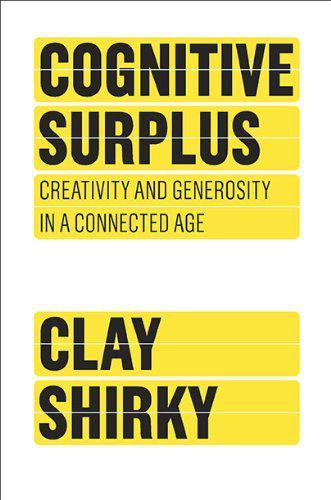
Cognitive Surplus: Creativity and Generosity in a Connected Age
by
Clay Shirky
Published 9 Jun 2010
This fact, key to our current era, has been a persistent surprise. At every turn, skeptical observers have attacked the idea that pooling our cognitive surplus could work to create anything worthwhile, or suggested that if it does work, it is a kind of cheating, because sharing at a scale that competes with older institutions is somehow wrong. Steve Ballmer of Microsoft denounced the shared production of software as communism. Robert McHenry, a former editor in chief of Encyclopedia Britannica, likened Wikipedia to a public rest room. Andrew Keen, author of The Cult of the Amateur, compared bloggers to monkeys. These complaints, self-interested though they were, echoed more broadly held beliefs.
…
The New York Times Magazine, March 23, 2008, http://www.nytimes.com/2008/03/23/magazine/23patients-t.html (accessed January 9, 2010). 158 it also has an “openness philosophy”: “The Value of Openness,” The PatientsLikeMe Blog, December 13, 2007, http://blog.patientslikeme.com/2007/12/13/the-value-of-openness (accessed January 9, 2010). CHAPTER 6: Personal, Communal, Public, Civic 161 Steve Ballmer of Microsoft denounced the shared production of software: Lea Graham, “MS Ballmer: Linux Is Communism,” The Register, July 31, 2000, http://www.theregister.co.uk/2000/07/31/ms_ballmer_linux_is_communism/ (accessed January 10, 2010). 162 Robert McHenry, “The Faith-Based Encyclopedia,” Technology Commerce Society Daily, November 15, 2004, http://www.tcsdaily.com/article.aspx?
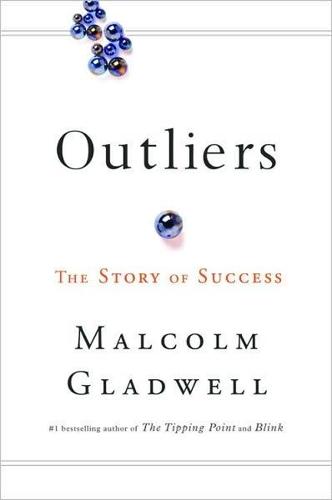
Outliers
by
Malcolm Gladwell
Published 29 May 2017
Allen went on to found Microsoft with Bill Gates. When was Paul Allen born? Paul Allen: January 21, 1953 The third-richest man at Microsoft is the one who has been running the company on a day-to-day basis since 2000, one of the most respected executives in the software world, Steve Ballmer. Ballmer's birth date? Steve Ballmer: March 24,1956 Let's not forget a man every bit as famous as Gates: Steve Jobs, the cofounder of Apple Computer. Unlike Gates, Jobs wasn't from a rich family and he didn't go to Michigan, like Joy. But it doesn't take much investigation of his upbringing to realize that he had his Hamburg too.
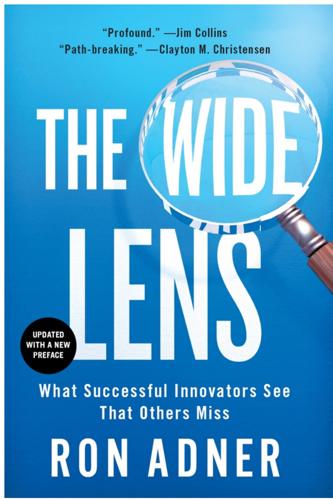
The Wide Lens: What Successful Innovators See That Others Miss
by
Ron Adner
Published 1 Mar 2012
Moreover, Apple warned that attempts to unlock the phone from the AT&T network would “cause irreparable damage to the iPhone’s software, which will likely result in the modified iPhone becoming permanently inoperable when a future Apple-supplied iPhone software update is installed.” Apple threatened to turn your $499 iPhone into a $499 iBrick! And it did! Asked to react to the announcement of the iPhone, Microsoft CEO Steve Ballmer literally laughed out loud, “Five hundred dollars fully subsidized with a plan! I said that’s the most expensive phone in the world, and it doesn’t appeal to business customers because it doesn’t have a keyboard, which makes it not a very good e-mail machine. . . . We have great Windows Mobile devices on the market today. . . .
…
CNET.com, July 12, 2002, http://news.cnet.com/2100-1040-943519.xhtml. 210 iPod, boasting 100 million customers: Steven Levy, “Why We Went Nuts About the iPhone,” Newsweek, July 16, 2007. 210 Apple’s stock shot up 44 percent: Matt Krantz, “iPhone Powers up Apple’s Shares,” USA Today, June 28, 2007. 211 “four times the number of PCs that ship every year”: Morris, “Steve Jobs Speaks Out.” 211 Ericsson released the R380: Dave Conabree, “Ericsson Introduces the New R380e,” Mobile Magazine, September 25, 2001. 211 Palm followed up with its version: Sascha Segan, “Kyocera Launches First Smartphone in Years,” PC Magazine, March 23, 2010, http://www.pcmag.com/article2/0,2817,2361664,00.asp#fbid=C81SVwKJIvh. 211 “one more entrant into an already very busy space”: “RIM Co-CEO Doesn’t See Threat from Apple’s iPhone,” InformationWeek, February 12, 2007. 212 the phone was exclusively available from only one carrier: In a handful of markets regulators ruled the exclusivity arrangement illegal. 212 “The bigger problem is the AT&T network”: David Pogue, “The iPhone Matches Most of Its Hype,” New York Times, June 27, 2007. 212 priced at a mere $99 in 2007: Kim Hart, “Rivals Ready for iPhone’s Entrance; Pricey Gadget May Alter Wireless Field,” Washington Post, June 24, 2007. 212 “cause irreparable damage to the iPhone’s software”: Apple, press release, September 24, 2007. 213 “I say I like our strategy”: Steve Ballmer interviewed on CNBC, January 17, 2007. 213 They ran out of the older model six weeks before the July 2008 launch: Tom Krazit, “The iPhone, One Year Later,” CNET.com, June 26, 2008, http://news.cnet.com/8301-13579_3-9977572-37.xhtml. 213 60 percent went to buyers who already owned at least one iPod: Apple COO Tim Cook’s comments at Goldman Sachs Technology and Internet Conference, cited in JPMorgan analyst report, “Strolling Through the Apple Orchard: The Good, the Bad and the Ugly Scenarios,” March 4, 2008. 215 the average iPhone user paid AT&T $2,000: Jenna Wortham, “Customers Angered as iPhones Overload AT&T,” New York Times, September 2, 2009. 215 as high as $18 per user per month: Tom Krazit, “Piper Jaffray: AT&T Paying Apple $18 per iPhone, Per Month,” CNET.com, October 24, 2007, http://news.cnet.com/8301-13579_3-9803657-37.xhtml. 216 Apple announced its 10 billionth app download: Apple.com, “iTunes Store Tops 10 Billion Songs Sold,” February 25, 2010, http://www.apple.com/pr/library/2010/02/25iTunes-Store-Tops-10-Billion-Songs-Sold.xhtml.
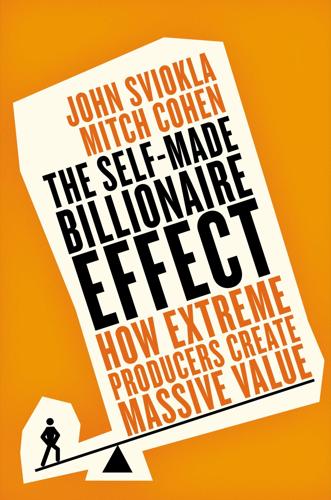
The Self-Made Billionaire Effect: How Extreme Producers Create Massive Value
by
John Sviokla
and
Mitch Cohen
Published 30 Dec 2014
While these partnerships are necessary, the exact makeup of the Producer-Performer pair may change depending on the skills needed to take advantage of an opportunity. As Mark Cuban attests, the complement he needed for MicroSolutions was Martin Woodall, but the Broadcast.com dream team included Todd Wagner. Bill Gates started out with Paul Allen, but he also had a long-term Producer-Performer partnership with Steve Ballmer, during which Microsoft created most of its value. Jobs and Wozniak created the iconic computer maker, but Jobs and Jony Ive, Apple’s chief designer, were the team behind the beauty and sensibility of the iMac, the iPod, the iPhone, and the iPad. John Paul DeJoria and Paul Mitchell founded John Paul Mitchell Systems, but years later DeJoria started another venture with his friend Martin Crowley, a talented architect who went bankrupt trying to make a business designing buildings.8 DeJoria pointed him in a different direction and set him up as an architecture buyer supplying materials from Mexico for high-end renovations.
…
The Carnival parent today owns nearly a dozen cruise lines, including Cunard, Holland America Line, and Princess Cruises. Arison is also the owner of the Miami Heat basketball team. Steven Ballmer b. 1956, United States Microsoft In 1980, two years after graduating from Harvard, Steve Ballmer was invited by fellow student Bill Gates to join a fledgling Microsoft as its manager of operations. Within a year, Microsoft signed its breakthrough deal with IBM to design an operating system for the company’s new product, the personal computer. Ballmer became the marketing and sales guru, and was key to realizing Gates’s vision.
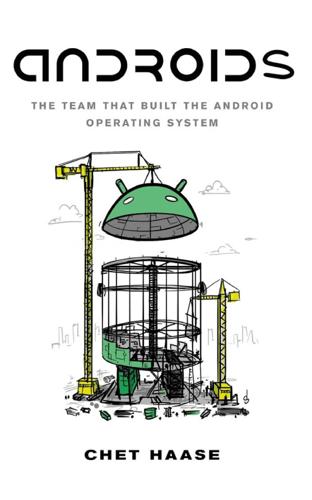
Androids: The Team That Built the Android Operating System
by
Chet Haase
Published 12 Aug 2021
The distinction between these lifecycle phases is one of the things that Android developers need to understand about their applications… and it’s always been one of the more complicated bits of Android to fully understand. 305 Extensible Messaging and Presence Protocol 306 https://developer.android.com/sdk/OLD_RELEASENOTES#0.9_beta 307 Which was later rebranded as Firebase Cloud Messaging. 308 Dogfooding (short for “eating our own dogfood”) means testing our own stuff. 309 There’s more about Peisun later, in the Managing All the Things chapter. 24. Developer Tools “Developers, developers, developers, developers, developers, developers, developers, developers, developers, developers, developers, developers, developers, developers.” –Steve Ballmer, Microsoft310 One of the reasons behind Android’s growth is the developer ecosystem that was created along the way, enabling thousands (now millions) of applications for people to find, download, and use. But this kind of ecosystem doesn’t just happen automatically, especially for a new platform with no market share.
…
A few months later, we got more reinforcements as another internal writer joined the effort, Scott Main. We spent all of our time creating the fundamentals to go around the reference docs, and then bringing up the website. The engineering team gave us tons of support along the way. Getting things off the ground was a total team effort.”327 310 There is a famous video you can find online of Steve Ballmer (then Microsoft CEO) saying “Developers!” over and over while pacing energetically back and forth across the stage at a Microsoft conference many years ago. On one hand, the video is a quirky piece of tech history (and a meme in the industry). On the other hand, he wasn’t wrong. For companies like Microsoft, and projects like Android, it really is all about the developers that write applications for your platform. 311 “Hello World!”
…
It’s costly, arduous, and at times a deeply unsexy job of supporting customers day by day in launching phones. That’s something there’s very little experience of in Google’s environment. They are talking about having a phone by the end of next year. It’s not one that is going to ignite developers.” The following day, Steve Ballmer (then CEO of Microsoft) said during a news conference, “Their efforts are just some words on paper right now, it’s hard to do a very clear comparison [with Windows Mobile]. Right now they have a press release, we have many, many millions of customers, great software, many hardware devices.” There seemed to be a general sense of vaporware377 in the air.
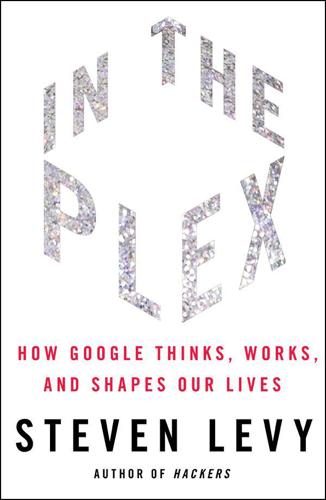
In the Plex: How Google Thinks, Works, and Shapes Our Lives
by
Steven Levy
Published 12 Apr 2011
After it became clear that Google was not just an innovator but a financial powerhouse with resources to take on Microsoft, the rivalry took on a bloodlust. Just how intensely Microsoft’s CEO, Steve Ballmer, despised his competitor to the south became clear in depositions that would be filed in the Lee lawsuit. The year before, in November 2004, a top Microsoft executive named Mark Lucovsky had gone to Steve Ballmer with the unwelcome news that he was leaving Microsoft. “Just tell me it’s not Google,” said Ballmer, according to Lucovsky’s sworn testimony. Lucovsky confirmed that it was indeed Google.
…
“Some people say ‘massive amounts.’ I try to avoid ‘massive.’ But it’s a lot.” He would not put a number on it. “The fact that we’re not transparent about it causes us embarrassment,” he says, explaining that “competitive reasons” justify the reticence. By not knowing what Google is spending, Microsoft CEO Steve Ballmer, for instance, will have no target to aim at when apportioning his own cost estimates for infrastructure. “If I’m Ballmer, I’m probably going to pick a number that’s too high, in which case it bankrupts Microsoft—and that’s good for Google,” says Weihl. “Or he’ll pick a number that’s too low, in which case it can’t really compete.
…
To head the team, it hired the scientist Qi Lu, a forty-eight-year-old whose tireless work habits were legendary. Those regarding this as a coup included Google’s search czar, Udi Manber: “I have the highest regard for him,” he said. Microsoft called its new search engine Bing, and it was launched in June 2009 by CEO Steve Ballmer with great fanfare. In terms of search quality, Bing did not intimidate Google. Its relevance algorithms were basically no different from those in the previous version of Microsoft’s search, much less likely to draw out the Audrey Fino–like needles in the Internet haystack. Eventually that could change, as Microsoft would supply Bing to Yahoo for the latter company’s search engine.
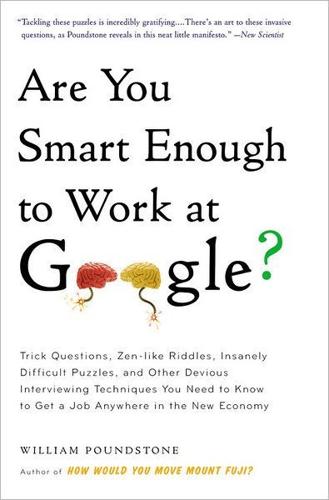
Are You Smart Enough to Work at Google?: Trick Questions, Zen-Like Riddles, Insanely Difficult Puzzles, and Other Devious Interviewing Techniques You ... Know to Get a Job Anywhere in the New Economy
by
William Poundstone
Published 4 Jan 2012
The interviewer left the room for ten minutes. When he returned, he announced, “I’m happy to say that we’re recommending you for immediate hiring into our marketing department.” This joke pokes fun at one of the most famous brainteaser questions, long associated with Microsoft and alleged to have been devised by Steve Ballmer himself. It expresses deep ambivalence about this style of interviewing. Feynman (a childhood hero of Sergey Brin’s) shows more creative thinking than does Microsoft’s so-called right answer. A true story: Brin did graduate work in Stanford’s computer science building, named for its donor, William Gates.
…
“I always try to get a list of people”: Agrawal interview, June 8, 2010. “It gets harder and harder”: Carlisle interview, April 7, 2010. “Not hiring someone for poor communication skills”: Posted by “libation” on the New York Times site, as comment to Wortham, “More Employers Use Social Networks.” Chapter Five alleged to have been devised by Steve Ballmer: Poundstone, How Would You Move Mount Fuji?, 79–80. Feynman (a childhood hero of Sergey Brin’s): Auletta, Googled, 28. “We were offended at having four-digit numbers”: Auletta, Googled, 32. “A very senior Microsoft developer”: See www.joelonsoftware.com/items/2005/10/17.html. Tyma posed this question to his mother: See Tyma’s blog post at http://paultyma.blogspot.com/2007/03/howto-pass-silicon-valley-software.html.
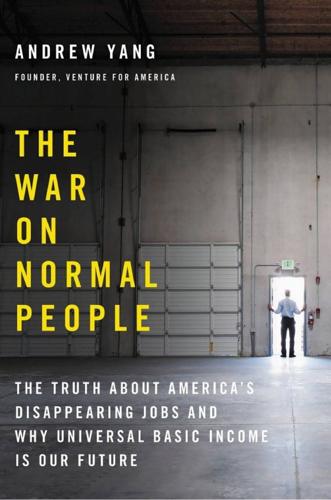
The War on Normal People: The Truth About America's Disappearing Jobs and Why Universal Basic Income Is Our Future
by
Andrew Yang
Published 2 Apr 2018
In addition to GDP and job statistics, the government should adopt measurements such as: • Median income and standard of living • Levels of engagement with work and labor participation rate • Health-adjusted life expectancy • Childhood success rates • Infant mortality • Surveys of national well-being • Average physical fitness and mental health • Quality of infrastructure • Proportion of elderly in quality care • Human capital development and access to education • Marriage rates and success • Deaths of despair/despair index/substance abuse • National optimism/mindset of abundance • Community integrity and social capital • Environmental quality • Global temperature variance and sea levels • Reacclimation of incarcerated individuals and rates of criminality • Artistic and cultural vibrancy • Design and aesthetics • Information integrity/journalism • Dynamism and mobility • Social and economic equity • Public safety • Civic engagement • Cybersecurity • Economic competitiveness and growth • Responsiveness and evolution of government • Efficient use of resources It would be straightforward to establish measurements for each of these and have them updated periodically, similar to what Steve Ballmer set up at USAFacts.org—a treasure trove of social metrics that pulls from many public and private sources. Everyone could then see how we’re doing and be galvanized around improvement. This could be tied in to the Digital Social Credit system, where people who help move society in a particular direction are rewarded.
…
CHAPTER 19: HUMAN CAPITALISM The concept of GDP and economic progress didn’t even exist until the Great Depression: The Federal Reserve of St. Louis, Discover Economic History, National Income, 1929–32. Letter from the Acting Secretary of Commerce Transmitting in Response to Senate Resolution No. 220 (72D CONG.) A Report on National Income, 1929–32 (Washington, DC: Government Printing Office, 1934). Steve Ballmer set up a series of measurements and facts at www.USAFacts.org that is a treasure trove of social metrics and pulls from many public and private sources. CHAPTER 20: THE STRONG STATE AND THE NEW CITIZENSHIP When Harry Truman left the office of the presidency in 1953…: Jeff Jacoby, “Harry Truman’s Obsolete Integrity,” New York Times, March 2, 2007.
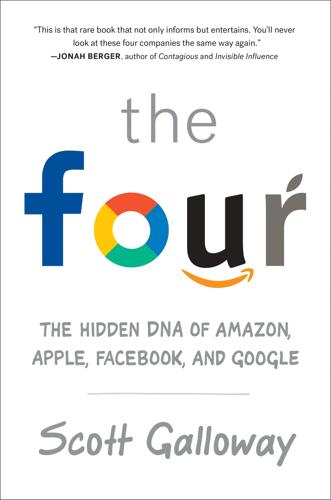
The Four: How Amazon, Apple, Facebook, and Google Divided and Conquered the World
by
Scott Galloway
Published 2 Oct 2017
In the words of Silicon Valley marketer Tom Hayes, who did just that for Applied Materials, “When the news is negative, you want to be perceived as a good company to which a bad thing has happened.” Image matters, a lot. Perception is a company’s reality. That makes the importance of being likeable, even cute, the fourth factor in the T Algorithm. Bill Gates and Steve Ballmer were neither likable nor cute. In fact, the room got brighter whenever they left it. So, when Microsoft achieved a certain level of influence, district attorneys and regulators woke up one morning all over Europe and decided the easiest way to the governor’s mansion, or Parliament, was to go after the Wizards of Redmond.
…
And while none of them graduated, their college experiences were still instrumental in their success. Facebook went viral among college students because it grew out of a real need on campus. Gates spent three years intensely studying math and programming at Harvard before he started Microsoft, and he met Steve Ballmer there, the man to whom he’d turn over the reins of Microsoft a quarter century later. And even Jobs, who passed through Reed College in an adolescent daze, famously had his passion for design sparked there. All the bullshit, cost, and stress parents endure to get, and keep, their kids on the path to a decent four-year school is still, very much, worth it.
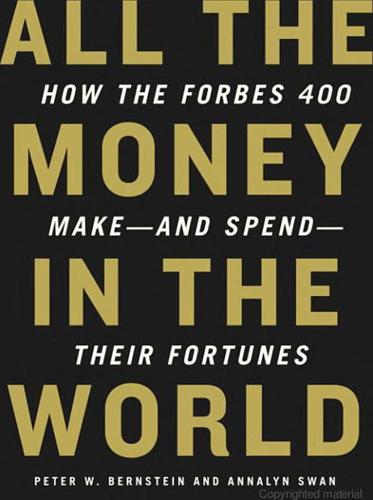
All the Money in the World
by
Peter W. Bernstein
Published 17 Dec 2008
They teamed up to write a version of BASIC (short for Beginner’s All-purpose Symbolic Instruction Code), a compact computer language for the MITS machine, and Microsoft was born. When Microsoft had about thirty-five employees, Gates and Allen decided they needed a professional manager. They turned to Steve Ballmer, who had lived down the hall from Gates at Harvard. Unlike Gates, Ballmer, the son of Swiss immigrants, hung around Cambridge long enough to get his Harvard degree in math and economics. Brainy Ballmer then headed to Stanford for a master’s, but quit to take the Microsoft job as head of marketing, user education, and systems testing
…
He then sued PeopleSoft to eliminate the takeover defense it had put in place to deter Oracle. As Matthew Symonds, a writer at the Economist and author of another Ellison biography put it, “He stalked PeopleSoft a long time until it was weak enough to fall into his hands.” The same winner-take-all philosophy drove Bill Gates and Steve Ballmer, his longtime number two at Microsoft and fellow 400 member. Ballmer had a reputation for being even more competitive than his boss. Once they had defeated such 1980s competitors21 as Apple, Novell, and Digital Equipment Corporation (DEC), they turned their collective attention to the Internet.
…
More than a century after New York newspaper publisher Horace Greeley advised young fortune hunters in a now-famous editorial to “Go West, Young Man,” his maxim has taken on a fresh resonance with the transformation of the West Coast into a new kind of frontier. Now, instead of prospecting for gold or wildcatting for oil, the would-be billionaires moving out West are making their lucre in industries based on ideas. The West Coast not only has Bill Gates and several other Forbes 400 fortunes generated by Microsoft, including Steve Ballmer (2006 net worth: $13.6 billion), Paul Allen (2006 net worth: $16 billion), and Charles Simonyi (2006 net worth: $1 billion); it also has dozens more billionaires than does the East Coast. * * * New York’s down, California’s up In 1982 New York was at the top of the heap, with more 400 members than any other state.
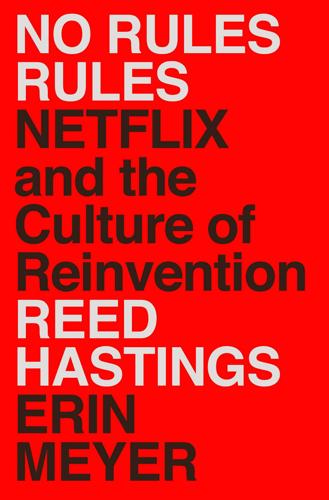
No Rules Rules: Netflix and the Culture of Reinvention
by
Reed Hastings
and
Erin Meyer
Published 7 Sep 2020
This time, not only did I feel more relief and build trust with my staff, but also people began telling me about all sorts of mistakes they made, mistakes they’d been previously sweeping under the rug. That offered them relief, improved our relationships, and gave me more information so I could do a better job managing the business. In 2007, almost a decade later, I joined the Microsoft board. Steve Ballmer, the Microsoft CEO at the time, is this big, boisterous, friendly guy. He would talk very transparently about his mistakes, saying stuff like: “Look here, see how I really screwed this thing up.” This led me to feel connected to him. What an honest thoughtful guy! And I realized: oh, it’s just normal human behavior to feel more trusting of someone who is open about mistakes.
…
The Comic’s Comic, October 3, 2011, http://thecomicscomic.com/2011/10/03/not-seen-on-snl-parody-of-the-netflixqwikster-apology-video. Chapter 7: The Keeper Test Eichenwald, Kurt. “Microsoft’s Lost Decade.” Vanity Fair. July 24, 2012. www.vanityfair.com/news/business/2012/08/microsoft-lost-mojo-steve-ballmer. Kantor, Jodi, and David Streitfeld. “Inside Amazon: Wrestling Big Ideas in a Bruising Workplace.” The New York Times, August 15, 2015, www.nytimes.com/2015/08/16/technology/inside-amazon-wrestling-big-ideas-in-a-bruising-workplace.html. Ramachandran, Shalini, and Joe Flint. “At Netflix, Radical Transparency and Blunt Firings Unsettle the Ranks.”
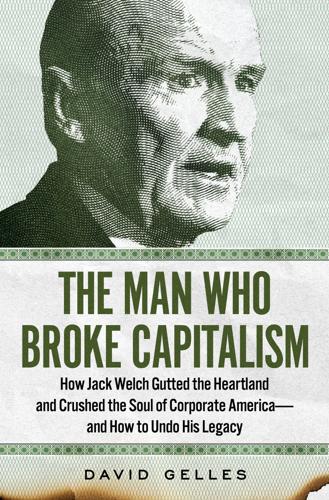
The Man Who Broke Capitalism: How Jack Welch Gutted the Heartland and Crushed the Soul of Corporate America—and How to Undo His Legacy
by
David Gelles
Published 30 May 2022
Nevertheless, McNerney oversaw a period of expansion in the aircraft engines business, and was solidly in contention for the top job as Welch’s retirement neared. The third and final true contender to become the next CEO was Jeff Immelt. At 6 foot 4 inches, Immelt towered above Welch. His father had worked at GE in the aviation business, and after graduating from Dartmouth, Immelt went to work for Procter & Gamble, where he shared a cubicle with Steve Ballmer, the future CEO of Microsoft. After getting an MBA from Harvard Business School, Immelt joined GE. Early in his career there, Immelt distinguished himself by deftly managing a major refrigerator recall for Welch. After that, he was promoted repeatedly, making his way up through plastics, the same proving ground where Welch made a name for himself.
…
The Vitality Curve is still in use at companies large and small. In the years after Welch popularized stack ranking at GE, the practice became widespread not just at companies like Ford and 3M, where it led to lawsuits, but also in the tech industry. The practice flourished at Microsoft for years under Steve Ballmer, Immelt’s former cubicle-mate. Unsurprisingly, it led to mass disaffection and an erosion of cooperation, as colleagues were pitted against each other. “This caused people to resist helping one another,” said one Microsoft employee. “It wasn’t just that helping a colleague took time away from someone’s own work.
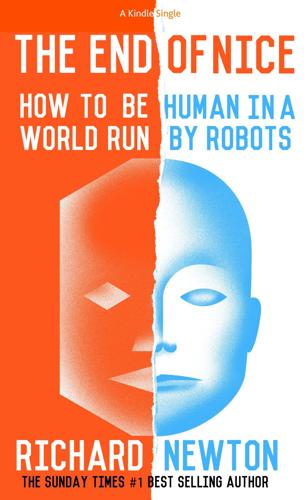
The End of Nice: How to Be Human in a World Run by Robots (Kindle Single)
by
Richard Newton
Published 11 Apr 2015
In a world that is nice and prizes conformity, routine work and standardisation of opinion, the contrast to normal behaviour by those who are unreasonable, is very apparent. In some examples this signals enormous amounts of grit, and there seems to be a correlation between the disagreeableness of some legendary entrepreneurs and their success. Steve Jobs was famous for his prickliness, Bill Gates threw tantrums, Microsoft’s Steve Ballmer threw chairs, Andy Grove of Intel was so fierce that a subordinate fainted during a performance review, and Jeff Bezos is known for going into rages that his Amazon colleagues call “nutters”. According to a biography, Bezos’ notable put-downs include: “I’m sorry, did I forget to take my stupid pills today?”
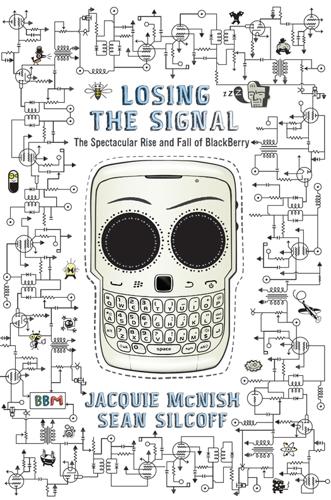
Losing the Signal: The Spectacular Rise and Fall of BlackBerry
by
Jacquie McNish
and
Sean Silcoff
Published 6 Apr 2015
The bigger danger was that some global mammoth would simply smash the small Waterloo upstart. The rival Balsillie and Lazaridis worried about most was Microsoft after it signaled an interest in wireless e-mail by joining a short-lived venture with semiconductor maker Qualcomm in the late 1990s. At the same time Microsoft executives, including CEO Steve Ballmer, began asking RIM staff questions at trade shows about how BlackBerry worked. Microsoft’s combative generals would not be thrown off by the playful ruses that kept Yankowski at bay. Nor was Balsillie inclined to mess with them. “I had an expression: Never moon the gorilla,” Balsillie says. “Microsoft was the gorilla.
…
They made their last pilgrimage to Las Vegas in early January for the Consumer Electronics Show, the industry’s annual showcase for the latest mass market technology breakthroughs. They met in private with Lenovo’s executive team, led by chairman and CEO Yang Yuanqing, to explore licensing RIM’s phone software to the Chinese handset maker. They sat down with Microsoft’s Steve Ballmer, a longtime BlackBerry admirer. Side by side they glided through the convention, stopping to stare in wonder at Samsung’s arena-sized marketing display for its high-end, Android-powered Galaxy Note smartphone. BlackBerry, Balsillie mused, was still late with its 4G phone and had only a fraction of the marketing muscle needed to compete with the sprawling Korean manufacturer.
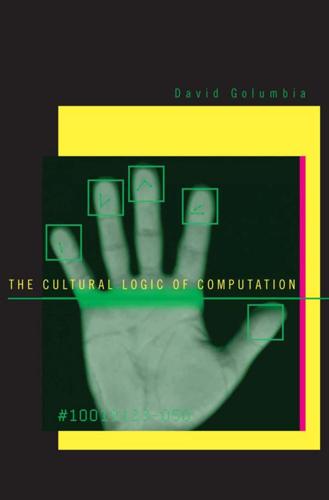
The Cultural Logic of Computation
by
David Golumbia
Published 31 Mar 2009
Despite his reputation as a programmer, according to Bill Gates, “for the first three years, most of the other professionals at Microsoft focused solely on technical work, and [Gates] did most of the sales, finance, and marketing, as well as writing code” (Gates 1995, 41). The other key Microsoft employee, Steve Ballmer, was a math major at Harvard with Gates. Gates reflects that “Steve and I led very different lives, but we were both trying to pare down to the minimum course time needed to get top grades” (40). He tells one instructive story: [Steve] and I would pay very little attention to our classes and then furiously inhale the key books just before an exam.
…
Ballmer, not originally especially interested in computers, quickly becomes the second-most important Microsoft employee, specifically surpassing the extremely talented computer scientists (Bob Wallace, Paul Allen, Nathan Myhrvold, etc.) who might have shared power. Instead, what Gates needed was exactly what he found in his “alter ego,” Steve Ballmer. In no small part that must be due to Ballmer’s ability to think “algorithmically”—to see multiple paths to manipulating the objects in a problem field, regardless of bounds that may have been imposed by external forces, just as he and Gates algorithmically “gamed” the Harvard system. Perhaps even more openly than Gates’s, Ballmer’s personality exemplifies the techno-egotist subject that has its own power as virtually its only focus.

Genius Makers: The Mavericks Who Brought A. I. To Google, Facebook, and the World
by
Cade Metz
Published 15 Mar 2021
“When I was an academic, I thought that was great, because you don’t have to dirty your hands with development,” Hinton says. “But in terms of actually getting the technology to a billion people, Google is far more efficient.” He was also concerned by an article in Vanity Fair titled “Microsoft’s Lost Decade,” which explored the ten-year tenure of chief executive Steve Ballmer through the eyes of current and former Microsoft executives. One of the story’s big revelations was the way Ballmer’s Microsoft used a technique called “stack ranking” to review the performance of its employees and weed out a certain proportion of them regardless of their actual performance and promise.
…
University of Washington professor Pedro Domingos called them “tribes”: Pedro Domingos, The Master Algorithm: How the Quest for the Ultimate Learning Machine Will Remake Our World (New York: Basic Books, 2015). an article in Vanity Fair: Kurt Eichenwald, “Microsoft’s Lost Decade,” Vanity Fair, July 24, 2012, https://www.vanityfair.com/news/business/2012/08/microsoft-lost-mojo-steve-ballmer. Brought up by his grandfather: Jennifer Bails, “Bing It On,” Carnegie Mellon Today, October 1, 2010, https://www.cmu.edu/cmtoday/issues/october-2010-issue/feature-stories/bing-it-on/index.html. After Twitter acquired Madbits: Catherine Shu, “Twitter Acquires Image Search Startup Madbits,” TechCrunch, July 29, 2014, https://gigaom.com/2014/07/29/twitter-acquires-deep-learning-startup-madbits/.
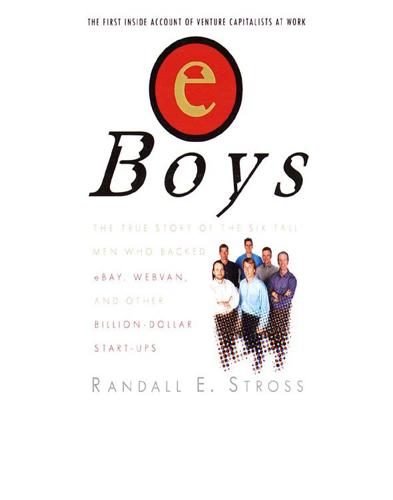
eBoys
by
Randall E. Stross
Published 30 Oct 2008
No one had heard of their college, but while their Stanford classmates found the heavily quantitative material of the first semester’s courses a challenge, the two engineers yawned. Their work experience also stood them in good stead. Kagle took a manufacturing course and impressed the second-year students, including one who would later invite him to join his venture capital firm. Kagle and Wozniak befriended two others who also came from the Motor City area: Steve Ballmer (future president of Microsoft) and Scott McNealy (cofounder and longtime CEO of Sun Microsystems). General Motors had sent Bob Kagle to graduate school, and it was understood that it was to General Motors that he was to return. But as graduation neared and he negotiated the details of where he would be working, he was dismayed that the company was going to send him to lonely exile: the finance group in New York, preparing reports for the board.
…
Feeling as if he had been granted emancipation papers, Kagle joined Boston Consulting Group in 1980 and three years later was recruited by Dave Marquardt to join Technology Venture Investors. He was able to repay his alma mater with a grant of Microsoft stock—Marquardt, thanks to the Stanford business-school connection to Steve Ballmer, had been the sole venture capitalist permitted to invest in Microsoft. Kagle learned the nuts and bolts of venture capital investing at a desk set up in the office of TVI’s avuncular founder, Burt McMurtry. In retrospect the moment of his joining turned out to have been the last of the 1980s go-go days for investments in early-stage companies.

Exponential: How Accelerating Technology Is Leaving Us Behind and What to Do About It
by
Azeem Azhar
Published 6 Sep 2021
For a couple of decades, Microsoft would remain a smaller player in the internet domain – at least compared to its dominant position in computer software. And it ceded key parts of the internet business, be it the e-commerce or internet search or messaging markets, to other companies. Faced with the launch of the iPhone in 2007, the firm flubbed again. Steve Ballmer, the then CEO of Microsoft, dismissed Apple’s new gadget, saying: ‘It has no chance of gaining significant market share.’40 Of course, the iPhone went on to become the dominant mobile device in the United States and Microsoft’s own mobile ambitions were left in tatters. The company launched its first Windows software for mobile phones in 2000 only to mothball the project 15 years later, with the market all but left to Apple’s iOS and Google’s Android software.
…
Anthony, ‘Kodak’s Downfall Wasn’t About Technology’, Harvard Business Review, 15 July 2016 <https://hbr.org/2016/07/kodaks-downfall-wasnt-about-technology> [accessed 14 December 2020]. 39 Wire Staff, ‘May 26, 1995: Gates, Microsoft Jump on “Internet Tidal Wave”’, Wired, 2 May 2010 <https://www.wired.com/2010/05/0526bill-gates-internet-memo/> [accessed 25 February 2021]. 40 Joel Hruska, ‘Ballmer: IPhone Has “No Chance” of Gaining Significant Market Share’, Ars Technica, 30 April 2007 <https://arstechnica.com/information-technology/2007/04/ballmer-says-iphone-has-no-chance-to-gain-significant-market-share/> [accessed 7 January 2021]. 41 Chris Smith, ‘Steve Ballmer Finally Explains Why He Thought the IPhone Would Be a Flop’, BGR, 4 November 2016 <https://bgr.com/2016/11/04/ballmer-iphone-quote-explained/> [accessed 7 January 2021]. 42 W. F. Ogburn, Social Change with Respect to Culture and Original Nature (New York: B. W. Huebsch, 1923), pp. 200–236. 43 Amanda Lenhart, ‘Chapter 3: Video Games Are Key Elements in Friendships for Many Boys’, in Teens, Technology & Friendships (Pew Research Center: Internet & Technology, 6 August 2015) <https://www.pewresearch.org/internet/2015/08/06/chapter-3-video-games-are-key-elements-in-friendships-for-many-boys/> [accessed 25 February 2021]. 44 Douglass C.
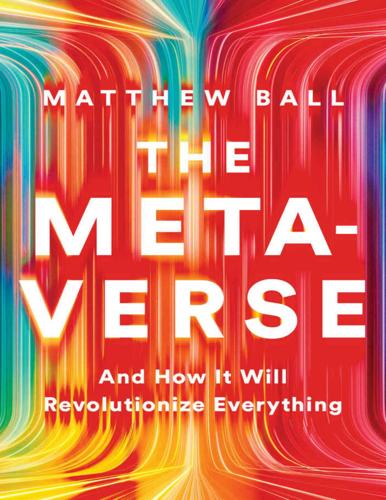
The Metaverse: And How It Will Revolutionize Everything
by
Matthew Ball
Published 18 Jul 2022
However, the company misread the dominant mobile form factor (the touchscreen); platform business model (app stores and services, rather than operating system sales); the role of the device (which became the primary computing device for most purchasers, rather than a secondary one); the extent of its appeal (everyone); its optimal price point ($500–$1,000); and its role (most functions, rather than just work and phone calls). As is well known today, Microsoft’s mistakes came to a head beginning in 2007, when the first iPhone was released. When asked about the device’s prospects, Microsoft’s second-ever CEO, Steve Ballmer, infamously laughed and replied, “Five hundred dollars? Fully subsidized? With a plan? I said that is the most expensive phone in the world. . . . And it doesn’t appeal to business customers because it doesn’t have a keyboard. Which makes it not a very good email machine.”14 Microsoft’s mobile operating system never recovered from the disruptive force of Apple’s iPhone and iOS, nor of Google’s Android, which targeted many of Microsoft’s typical Windows manufacturers, such as Sony, Samsung, and Dell, but was free-to-license and even shared a portion of app store revenues with the device makers.
…
The most interesting GAFAM company in the Metaverse era may well be Microsoft, one of the leading case studies for displacement in the mobile era. Since the very first Xbox released in 2001, investors and even company executives mused as to whether its gaming division was essential, or a distraction. Three months after Satya Nadella took over as CEO from Steve Ballmer, company founder and chairman Bill Gates said he would “absolutely” support Nadella if he wanted to spin off Xbox, “But we’re going to have an overall gaming strategy, so it’s not as obvious as you might think.” The first multi-billion-dollar acquisition Nadella made was for Minecraft—and in a move that now seems obvious but was unconventional at the time, opted against making the title exclusive to its Xbox and Windows platforms (or even better on them).
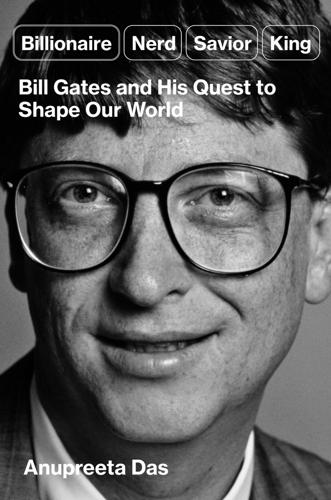
Billionaire, Nerd, Savior, King: Bill Gates and His Quest to Shape Our World
by
Anupreeta Das
Published 12 Aug 2024
At last count, 74 of the 400 richest Americans had made their billions from industries that can loosely be categorized as technology. Eight of the top 10 billionaires in the Forbes 2023 list of the world’s 400 richest people were tech billionaires—Musk, Bezos, Ellison, Page, Gates, Brin, Zuckerberg, and Steve Ballmer. Each had an estimated net worth of more than $100 billion. Their collective net worth of about $1.2 trillion exceeded the 2021 GDP of the Netherlands. If Bezos were a country, his net worth of $201 billion would rank him at fifty-fourth on the list of countries based on their gross domestic product, coming in just below Iraq but ahead of Ukraine.
…
The Behemoth that Behaved Like a Start-up On August 24, 1995, Gates stood onstage with fellow Microsoft executives as “Start Me Up” played in the background. The occasion was the launch of Windows 95, the latest iteration of Microsoft’s software. Gates, dressed in a beige polo shirt, didn’t dance to the guitar riffs of Keith Richards so much as shuffle to them. Steve Ballmer, the president of Microsoft, was less restrained. The company had shelled out several million dollars to the Rolling Stones to use their 1981 hit as part of an extravagant $300 million campaign to drum up enthusiasm for Windows 95. The Empire State Building was lit up in Microsoft’s colors of blue, green, yellow, and red.

The End of Work: Why Your Passion Can Become Your Job
by
John Tamny
Published 6 May 2018
No one was thinking that a computer or Internet company might produce a marketable smartphone. Palm’s CEO observed in 2006, “We’ve learned and struggled for a few years here figuring out how to make a decent phone. PC guys are not going to just figure this out. They’re not going to just walk in.”6 Microsoft’s CEO Steve Ballmer was no more prescient. In January 2007, he asked mockingly about the coming wave of phones, “Five hundred dollars? Fully subsidized? With a plan? I said that’s the most expensive phone in the world and it doesn’t appeal to business customers because it doesn’t have a keyboard, which makes it not a very good e-mail machine.”7 A couple of months later, the computer industry pundit John Dvorak said, “Apple should pull the plug on the iPhone” since there was “no likelihood that Apple can be successful in a business this competitive.”
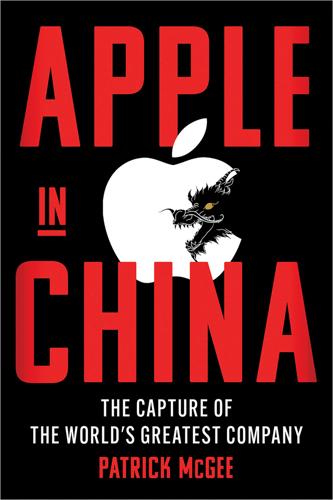
Apple in China: The Capture of the World's Greatest Company
by
Patrick McGee
Published 13 May 2025
The Apple II desktop had carved out a sizable market share and had a reputation for simplicity and elegance. IBM, forty times larger than Apple, didn’t make personal computers, but it was the world’s most valuable company thanks to its near monopoly in the much larger business of building, selling, and servicing mainframes. A young Steve Ballmer would remember thinking IBM was “the sun, the moon, the stars of the computer industry.” Jobs had for months been anxious about IBM’s potential entry into the market. His fear was that IBM—nicknamed Big Blue—would feature some breakthrough technology. His hope was that IBM would announce a solid computer, but one that was priced beyond the reach of the masses.
…
China’s economy might’ve been booming, causing wages to double in the previous four years, but urban wages were around RMB 2,500 a month ($370)—not enough for a big market to take hold. Or so it seemed. Like numerous other Western companies, Apple was only interested in the high end of the market. The iPhone was so expensive even within the United States that Microsoft CEO Steve Ballmer infamously mocked its chances for success. In the much poorer country of China, Apple had sufficient reason to believe it would garner few purchases, and it made no effort whatsoever to broaden its appeal with lower prices. Steve Jobs had been adamant that margins be maintained abroad, so for all international markets Apple would take the US price of its product, convert it one-to-one to another currency, and add other expenses such as value-added taxes and import fees.
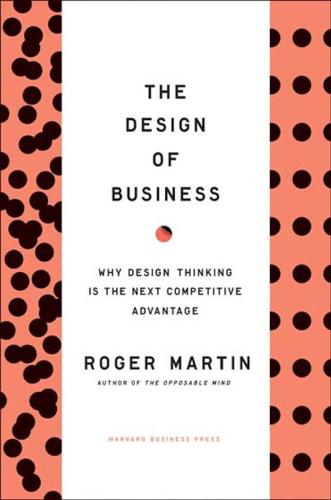
Design of Business: Why Design Thinking Is the Next Competitive Advantage
by
Roger L. Martin
Published 15 Feb 2009
In part, that is because P&G itself isn’t a marketplace brand the way Tide, Pampers, and Crest are. Those individual brands are managed by the global category teams that have grown up around them. Those teams have become a magnet for marketers who want to hone their brandbuilding expertise to the highest possible pitch. Among the alumni of P&G’s brand-building academy are Steve Ballmer of Microsoft; Meg Whitman, formerly of eBay; Jeff Immelt of GE; James Hackett of Steelcase; and Scott Cook of Intuit. But because little had been done to shift brand building significantly toward an algorithm, a great deal of knowledge about building brands existed only in the oral history of the company and in the heads of its current brand-building experts.
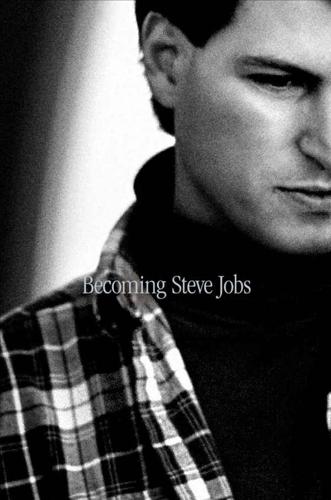
Becoming Steve Jobs: The Evolution of a Reckless Upstart Into a Visionary Leader
by
Brent Schlender
and
Rick Tetzeli
Published 24 Mar 2015
The arrival of computer companies transformed the event, and within a few years it would become the largest digital technology exposition of them all, drawing audiences upwards of 150,000 and all but paralyzing Sin City for a week each January. Apple didn’t attend CES. Steve preferred to announce his products in an environment he controlled. Microsoft didn’t control CES, but it certainly overshadowed everyone else. Chairman Gates, who relinquished his CEO title to Steve Ballmer in 2000, gave the keynote speech eight years running. Gates was a natural choice as the show’s semipermanent celebrity speaker, and he used the dais as a bully pulpit. In 2000, Microsoft really was the computer industry. Some 90 percent of the world’s personal computers ran its Windows operating system.
…
Gates was the only one who could reasonably think about dominating his awkwardly named but clearly inevitable “consumer-electronics-plus” era. He was powerful, and very, very smart: despite his penchant for dense verbiage, he had done a wonderful job describing the future of computing as we now have it, some fifteen years later. All he and Steve Ballmer had to do was execute the strategy. If they could, they would steer the company through its transition to this future, and in so doing return Microsoft to the kind of growth that investors wanted to see. No one knew it at the time, but Gates’s speech that January morning in Las Vegas marked the apex of Microsoft’s hegemony.

Radical Uncertainty: Decision-Making for an Unknowable Future
by
Mervyn King
and
John Kay
Published 5 Mar 2020
High-end portable devices for business people had been available since the turn of the century; the Palm Pilot was succeeded by the BlackBerry. But Apple aimed its products at consumers and then opened its systems to enable developers to provide ‘apps’. Combine the music player with the increasingly ubiquitous mobile phone, add a screen, and you could devise almost unlimited applications for a gadget that would fit in your pocket. Steve Ballmer, CEO of Microsoft, laughed derisively when the iPhone appeared – who, he asked rhetorically, would pay $500 for a phone? 20 A lot of people would; ten years on, more than 1.5 billion smartphones had been sold. The smartphone changed the nature not just of entertainment, but of business communication.
…
In developing his concept of conviction narrative theory, Tuckett suggests that a decision-maker must manage the ‘emotions evoked during narrative simulation’ in order to develop sufficient conviction about a proposed decision. 20 Tuckett’s thesis was formulated after listening to participants in financial markets describing at length how they did in practice make the decisions. The Reverend Bayes was rarely discussed. Successful businesses are built around narratives. Bill Gates and Steve Jobs resisted Olsen’s scepticism that anyone would want a computer in their home, and developed a fresh narrative around personal computing; Jobs successfully embraced – and Steve Ballmer, Gates’ successor, rejected – the later narrative which took the computer from the phone to the cloud and the pocket. Sam Walton, who founded the Walmart chain of stores, recalled that ‘I have concentrated all along on building the finest retail company we possibly could. Making a personal fortune was never particularly a goal of mine.’ 21 Bill Allen, a modest man who was dragged to the CEO’s office against his will, understood the inspirational power of narrative. 22 He made Boeing the world leader in civil aviation by choosing to ‘eat, breathe and sleep the world of aeronautics’.

Fancy Bear Goes Phishing: The Dark History of the Information Age, in Five Extraordinary Hacks
by
Scott J. Shapiro
That other employee was J. Allard. He had been imploring Microsoft’s C-suite to take the internet seriously, but to no avail. “I was a lonely voice,” Allard would later say. He had been hired in 1991 to build TCP/IP, the basic protocols used by the internet, into Microsoft’s networking software. Allard recalls Steve Ballmer, Microsoft’s executive vice president and Gates’s right-hand man, saying about TCP/IP, “I don’t know what it is. I don’t want to know what it is. My customers are screaming about it. Make the pain go away.” At the time, personal computers running Microsoft Windows operated either as stand-alone machines, used mainly for basic programming, word processing, spreadsheets, and video games, or as part of local area networks (LANs).
…
Because the price of personal computers had fallen to the point that renting a mainframe computer was no longer necessary, companies started to combine PCs in LANs to share resources, such as files and printers, and therefore save money. Stand-alone PCs and LANs, however, could not communicate to other computers over the internet—which is why Windows customers were yelling at Steve Ballmer. Without prompting, or even permission, Allard led the development of Microsoft’s first internet server in 1993. Until then, Microsoft products couldn’t share resources over the internet. The sole function of Allard’s server was to distribute TCP/IP code to customers, eventually making it one of the ten most used servers on the internet.

Little Bets: How Breakthrough Ideas Emerge From Small Discoveries
by
Peter Sims
Published 18 Apr 2011
“I don’t even remember my twenties,” he says. “I was probably working fourteen to sixteen hours a day. And I loved it. I was changing the world.” He would respond to any challenge and became an in-house entrepreneur, with a contagious enthusiasm to ignite others to create new Internet businesses. Steve Ballmer, who would become Microsoft’s CEO, noticed Richard, as did many other Microsoft executives. Richard became a superstar and was selected Microsoft’s Employee of the Year in 1994. However, the pace of technology change caused Richard to start to feel old almost overnight, certainly by 1996. “I went very quickly from being celebrated as employee of the year to being called old school.”
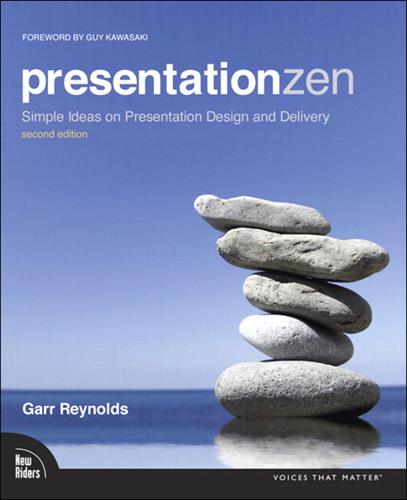
Presentation Zen
by
Garr Reynolds
Published 15 Jan 2012
In just the first few minutes on stage Jobs often used superlatives such as incredible, extraordinary, awesome, amazing, revolutionary. You can say his language was over the top, but Steve Jobs believed what he said. He was sincere. Yet the point is not to speak like Steve Jobs—or move around like Steve Ballmer—but to find your own level of passion and bring that honest enthusiasm out in your work for the world to see in your own style. Be positive, upbeat, humorous. Jobs was a very serious person, but he came across in presentations as an extremely positive person because he deeply believed in his content.

The Secret War Between Downloading and Uploading: Tales of the Computer as Culture Machine
by
Peter Lunenfeld
Published 31 Mar 2011
As important as their early success with the Apple II was, however, their greatest impact came seven years later, when they took the inspiration of people like Engelbart and Kay, and created a mass-market personal computer that set a new standard for participation. Before we get to that, we need to return to 1976, and move from Silicon Valley to New Mexico, where Gates and his partners, including former Harvard friends Paul Allen and Steve Ballmer, were writing programs for the Altair computer. That was the year that Gates wrote a famous letter to the hobbyist community complaining about rampant software theft. He claimed that nothing would please him more than establishing a business model for the community that would allow him to hire ten programmers to write software full time for the hobbyist market.
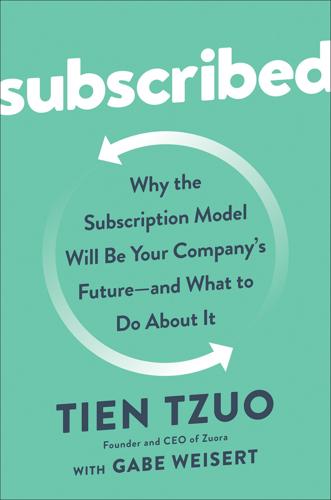
Subscribed: Why the Subscription Model Will Be Your Company's Future - and What to Do About It
by
Tien Tzuo
and
Gabe Weisert
Published 4 Jun 2018
Their very power and presence have begun to transform them from potentially strategic resources into commodity factors of production. They are becoming costs of doing business that must be paid by all but provide distinction to none.” Consolidation was rife, as Oracle swallowed up struggling companies in order to maintain market share through sheer inertia. After laughing off the iPhone in 2007, Steve Ballmer’s Microsoft was stuck firmly in the midst of a ten-year rut. While the big tech dinosaurs were limping through this extinction event, a nimbler breed of SaaS companies was coming onto the scene, but there were a lot of doubts about them. They only worked for small businesses. Their “dial-up software” couldn’t be configured or integrated into larger systems.
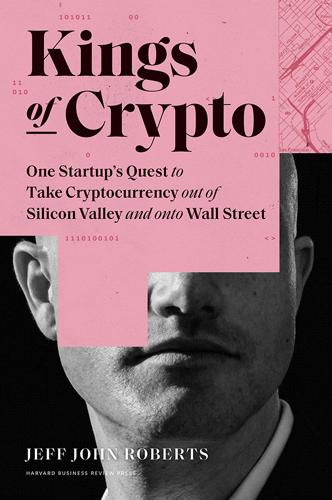
Kings of Crypto: One Startup's Quest to Take Cryptocurrency Out of Silicon Valley and Onto Wall Street
by
Jeff John Roberts
Published 15 Dec 2020
But some people at Coinbase—including Brian—still had to be persuaded. Fred grew antsy as he watched other crypto exchanges add Ethereum while Coinbase dithered. If Coinbase blew off Ethereum, it could be a strategic mistake like those taught in business classes—for example, when Microsoft CEO Steve Ballmer dismissed the arrival of the iPhone. In 2007, a laughing Ballmer infamously predicted Apple would sell none of its new $500 phones while saying Microsoft, safe in its Windows fortress, would control the mobile market. Ballmer’s hubris stranded his company for a decade in the tech wilderness. Fred didn’t want Coinbase to make a similar mistake.
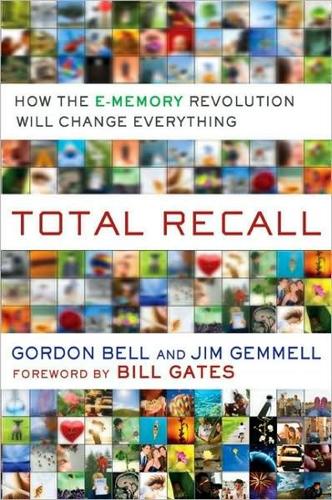
Total Recall: How the E-Memory Revolution Will Change Everything
by
Gordon Bell
and
Jim Gemmell
Published 15 Feb 2009
To serve this need, Amazon, which has vast amounts of excess storage, has a service called EC2, for Elastic Compute Cloud. Likewise, Microsoft has Azure, a cloud-based operating system that will let companies develop and run Web applications without setting up their own data center. Microsoft CEO Steve Ballmer has predicted that nearly all Internet data centers will be outsourced in this way by 2020. Cloud computing will lead to a single, integrated e-memory experience. Every device will act as an access point to recall from your e-memory. And every device will also become a source of information feeding into your e-memory, helping to record your experience.

Whiplash: How to Survive Our Faster Future
by
Joi Ito
and
Jeff Howe
Published 6 Dec 2016
In 1977, Ken Olson, the president of one of the world’s largest and most successful computer companies, Digital Equipment Corporation, told an audience that there was “no reason for any individual to have a computer in his home.”7 He stuck to this view throughout the 1980s, long after Microsoft and Apple had proved him wrong. Thirty years later, former Microsoft CEO Steve Ballmer told USA Today that there was “no chance that the iPhone is going to get any significant market share.”8 These anecdotes, besides being funny and amazing in a nerdy kind of way, do have a point, and it’s not to bring ridicule down on long-deceased American inventors. It’s to recognize that we are all susceptible to misinterpreting the technological tea leaves, that we are all blinkered by prevailing systems of thought.
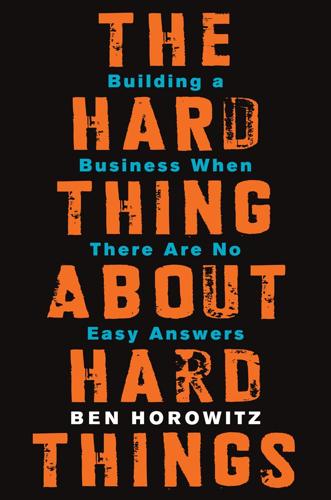
The Hard Thing About Hard Things: Building a Business When There Are No Easy Answers
by
Ben Horowitz
Published 4 Mar 2014
Since most organizations are run by Ones and have a team of Twos (sometimes Functional Ones) reporting to them, replacing the CEO can be extremely tricky. Do you promote someone from the executive staff even though they are likely a Two? Microsoft did this in 2000 when they replaced Bill Gates, a prototypical One, with Steve Ballmer, literally his number two. Or do you reach deep into the organization and pull a One from a level lower where they are likely to exist? General Electric famously did this with Jack Welch in 1981. It was an incredibly bold move by GE—not only did they promote an executive two levels down in the organizational chart past all of his superiors, but in doing so they named the youngest CEO in the history of GE.
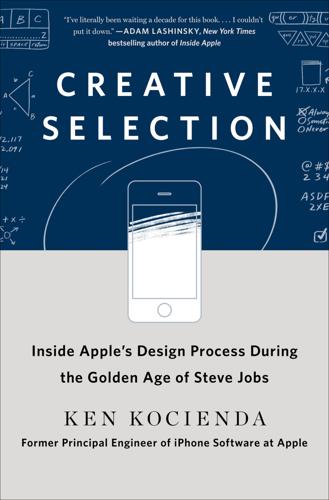
Creative Selection: Inside Apple's Design Process During the Golden Age of Steve Jobs
by
Ken Kocienda
Published 3 Sep 2018
In the aftermath of the biggest Apple keynote ever, I walked up to The Man himself, and he looked right past me. That was disappointing. There was the intersection of the iPhone with skeptics. It didn’t take long after the Macworld keynote announcement for people to start proclaiming their doubts about the product, and perhaps none has become as famous as the derisive commentary from Steve Ballmer, then the CEO of Microsoft, whose first reaction to hearing about the iPhone was: “500 dollars? Fully subsidized? With a plan? I said that is the most expensive phone in the world, and it doesn’t appeal to business customers because it doesn’t have a keyboard, which makes it not a very good email machine.”9 Time has proved Ballmer laughably wrong.
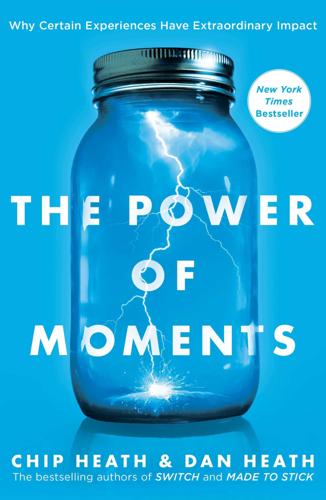
The Power of Moments: Why Certain Experiences Have Extraordinary Impact
by
Chip Heath
and
Dan Heath
Published 2 Oct 2017
Because of the facilitators’ questions, people in the villages are made to “see” what had been in front of their eyes the whole time. And that’s not a serendipitous “aha!” moment, it’s an engineered moment. How do we engineer powerful insights in more ordinary organizational situations? Consider the way Scott Guthrie handled a situation at Microsoft in 2011. He’d been tapped by Steve Ballmer to lead the company’s fast-growing cloud computing service, called Azure. Guthrie visited Azure customers, and their feedback about their experience with the service was clear: Azure’s underlying technology was good, but it was hard to use. Guthrie knew Azure would never meet its growth expectations until it was much more customer-friendly.
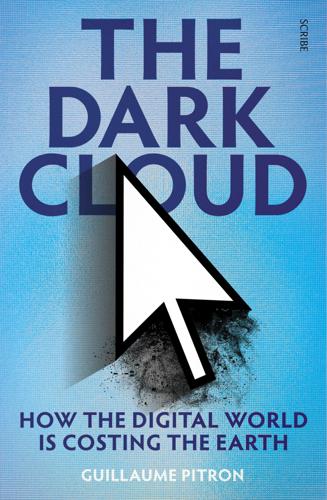
The Dark Cloud: How the Digital World Is Costing the Earth
by
Guillaume Pitron
Published 14 Jun 2023
One of the first authors to reveal this new science to the general public was the American consultant Nir Eyal in his bestseller Hooked: how to build habit-forming products.60 It unpacks the ‘manipulation matrix’ perfected by developers to make us consult our phones no less than 150 times a day: ‘triggers’ (sensory stimuli or negative emotions that encourage the user to connect) lead to the ‘action’ of browsing a website, with the expectation of a ‘reward’ (social recognition, enrichment, satisfying the ego). This then drives the user to ‘invest’ more into the digital product to maximise the benefits (personalised recommendations, better-targeted content). Yet at no point does Nir Eyal mention what has made captology even more formidable: the colour blue. The date is 28 May 2009, and Steve Ballmer is feeling confident. He is announcing the launch of the search engine Bing, developed by the company of which he is the CEO: Microsoft. Ballmer is armed with information anticipating the future performance of Bing — a piece of information worth $80 million. For months, Microsoft’s engineers, headed by Bing’s user experience manager, Paul Ray, had been pondering what colour to use for displaying the results of its future users’ search requests.

Facebook: The Inside Story
by
Steven Levy
Published 25 Feb 2020
For years thereafter both companies spent hundreds of millions of dollars luring each other’s workers and retaining those who got offers from rivals. Of course, Sandberg’s net was cast much wider than Google. She poached Microsoft’s top advertising executive, Carolyn Everson, to head sales, even though Everson had only recently taken the Microsoft job. (Microsoft CEO Steve Ballmer was so upset that Everson took careful note of the golf club he was swinging when she gave him the news. Fortunately, “He didn’t try to hit me,” she says.) In Everson’s interview with Zuckerberg, her prospective new boss seemed still to be wrapping his head around why companies needed brand advertising.
…
The texts would be taken from things Barry heard at Facebook, some consisting of phrases that embodied the company culture as he saw it, and others arising from the company’s attempts at self-definition. These efforts had been under way for about two years, while Zuckerberg was still smarting from his failure to convey the importance of his mission during the Yahoo! crisis. In 2007, on a walk with Microsoft CEO Steve Ballmer, Zuckerberg had asked how his company communicated the qualities its employees should exemplify. Ballmer told him that Microsoft had lists of self-defining qualities. Zuckerberg had gone home and written a bunch of those out and pinned it to the office refrigerator. The list wasn’t all that popular—someone took offense to the specification of “high IQ” and scratched it off the list.
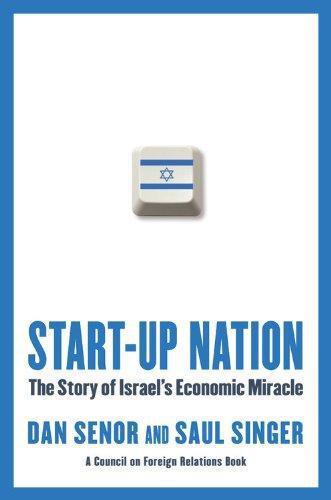
Start-Up Nation: The Story of Israel's Economic Miracle
by
Dan Senor
and
Saul Singer
Published 3 Nov 2009
And, he told us, the Israeli entrepreneur continues to perform in unimaginable ways.12 While the Holy Land has for centuries attracted pilgrims, lately it has been flooded by seekers of a different sort. Google’s CEO and chairman, Eric Schmidt, told us that the United States is the number one place in the world for entrepreneurs, but “after the U.S., Israel is the best.” Microsoft’s Steve Ballmer has called Microsoft “an Israeli company as much as an American company” because of the size and centrality of its Israeli teams.13 Warren Buffett, the apostle of risk aversion, broke his decades-long record of not buying any foreign company with the purchase of an Israeli company—for $4.5 billion—just as Israel began to fight the 2006 Lebanon war.
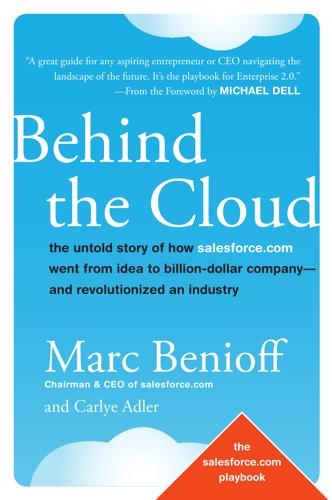
Behind the cloud: the untold story of how Salesforce.com went from idea to billion-dollar company--and revolutionized an industry
by
Marc Benioff
and
Carlye Adler
Published 19 Nov 2009
For example, when I heard that Microsoft (finally) announced that it wanted to enter the SaaS business with a CRM product, I fired off an e-mail to select journalists: ‘‘Well, it’s 7:29 A.M. in Singapore, and I just read that Microsoft announced a new offering to compete with us while I was asleep.’’ I included the interoffice memo that I had written (I’d done this before; tactics dictate strategy), and the San Francisco Chronicle ran an article about my response on its Web site. They included what I said in the e-mail and even reiterated their ‘‘favorite line’’ of the memo: ‘‘Steve Ballmer has publicly fretted that he would not be ‘out-hustled by anyone,’ but the fact is that Microsoft is being out-hustled by everyone.’’ Even better, they ran the entire memo in another section. No doubt, sending carefully chosen members of the press well-crafted office memos is one more way to get your story told.
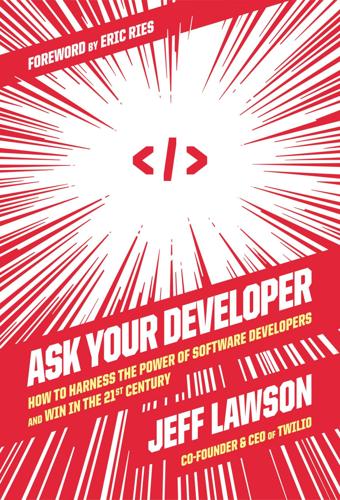
Ask Your Developer: How to Harness the Power of Software Developers and Win in the 21st Century
by
Jeff Lawson
Published 12 Jan 2021
In 2001, Microsoft embarked on its most ambitious upgrade to its dominant Windows operating system with a project code-named Longhorn. The software took five years to complete, with a major reset halfway through, and finally launched in 2006 as Windows Vista. By the time Vista reached the market, its developers had cut many of its features and failed to deliver the innovation that Bill Gates and Steve Ballmer had envisioned half a decade earlier when the project began. The bizarre thing is that these examples weren’t exceptions—they were the norm. The core problem was that most software projects started with meticulous requirements gathering, and then planning out months or years of work, with hard dependencies between myriad teams to deliver a final, working product in the end.
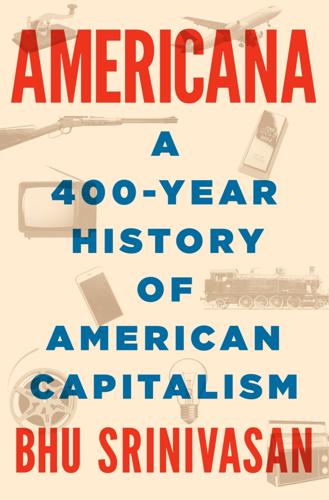
Americana: A 400-Year History of American Capitalism
by
Bhu Srinivasan
Published 25 Sep 2017
The most popular phone in America at the time was the Motorola RAZR, which had much the same utility as the flip phones of 1997. The first iPhone, however, played movies, took high-resolution photographs, offered maps, navigated the Web, and stored music just like the iPod. Some competitors didn’t quite get it. Hearing the proposed price, Microsoft’s CEO, Steve Ballmer, laughed out loud. “$500! That is the most expensive phone in the world. And it doesn’t appeal to business customers because it doesn’t have a keyboard, which makes it not a very good e-mail machine.” Fortunately for Apple, the form appealed to just about everyone else in the world. In less than eight years after the launch, Apple would sell more than 600 million units of various iPhone versions—made in China—bringing in more than half a trillion dollars in revenue and counting, over 230 million iPhones grossing over $155 billion in 2015 alone.
…
$7.7 billion versus $7.4 billion and eighty million hands: Apple Computer Inc., 2007 Annual Report (Washington DC: Securities and Exchange Commission, 2007). Jobs took the stage and “Every once in a while”: Steve Jobs, Keynote presentation of the iPhone at Macworld, San Francisco, January 9, 2007. “the most expensive phone”: Steve Ballmer, interview at Nortel, Innovative Communications Alliance, Power Lunch, January 17, 2007. 600 million units: Apple Computer Inc., 2015 Annual Report (Washington DC: Securities and Exchange Commission, 2015). Silicon Valley’s Tesla: Claire Cain Miller, “An All-Electric Sedan, Awaiting Federal Aid,” New York Times, March 26, 2009.

Americana
by
Bhu Srinivasan
The most popular phone in America at the time was the Motorola RAZR, which had much the same utility as the flip phones of 1997. The first iPhone, however, played movies, took high-resolution photographs, offered maps, navigated the Web, and stored music just like the iPod. Some competitors didn’t quite get it. Hearing the proposed price, Microsoft’s CEO, Steve Ballmer, laughed out loud. “$500! That is the most expensive phone in the world. And it doesn’t appeal to business customers because it doesn’t have a keyboard, which makes it not a very good e-mail machine.” Fortunately for Apple, the form appealed to just about everyone else in the world. In less than eight years after the launch, Apple would sell more than 600 million units of various iPhone versions—made in China—bringing in more than half a trillion dollars in revenue and counting, over 230 million iPhones grossing over $155 billion in 2015 alone.
…
$7.7 billion versus $7.4 billion and eighty million hands: Apple Computer Inc., 2007 Annual Report (Washington DC: Securities and Exchange Commission, 2007). Jobs took the stage and “Every once in a while”: Steve Jobs, Keynote presentation of the iPhone at Macworld, San Francisco, January 9, 2007. “the most expensive phone”: Steve Ballmer, interview at Nortel, Innovative Communications Alliance, Power Lunch, January 17, 2007. 600 million units: Apple Computer Inc., 2015 Annual Report (Washington DC: Securities and Exchange Commission, 2015). Silicon Valley’s Tesla: Claire Cain Miller, “An All-Electric Sedan, Awaiting Federal Aid,” New York Times, March 26, 2009.

More Joel on Software
by
Joel Spolsky
Published 25 Jun 2008
Watching nonprogrammers trying to run software companies is like watching someone who doesn’t know how to surf trying to surf. “It’s OK! I have great advisors standing on the shore telling me what to do!” they say, and then fall off the board, again and again. The standard cry of the MBA who believes that management is a generic function. Is Steve Ballmer going to be another John Sculley, who nearly drove Apple into extinction because the board of directors thought that selling Pepsi was good preparation for running a computer company? The cult of the MBA likes to believe that you can run organizations that do things that you don’t understand. Over the years, Microsoft got big, Bill got overextended, and some shady ethical decisions made it necessary to devote way too much management attention to fighting the US government.

The Perfect Thing: How the iPod Shuffles Commerce, Culture, and Coolness
by
Steven Levy
Published 23 Oct 2006
He is not shy in claiming that Apple is the only company taking big risks and accomplishing some magic in the personal computer world. He thinks he knows why. "I think back to Detroit in the seventies, when cars were so bad," he says. "Why? The people running the companies then didn't love cars. One of the things wrong with the PC industry today is that most of the people running the companies don't love PCs. Does Steve Ballmer [Microsoft] love PCs? Does Craig Barrett [Intel] love PCs? Does Michael Dell love PCs? If [Michael Dell] wasn't selling PCs he'd be selling something else. These people don't love what they create." Jobs paused for effect. "And people here do." For the record, none of those three guys has anything but good feelings about PCs.
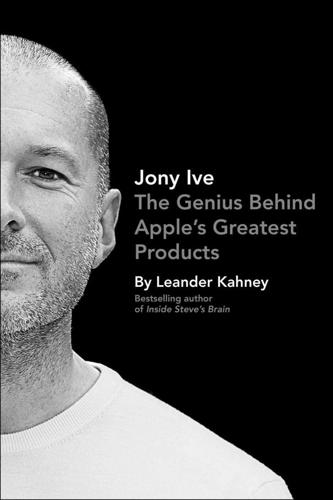
Jony Ive: The Genius Behind Apple's Greatest Products
by
Leander Kahney
Published 14 Nov 2013
It was—there was an enormous number of people that put in personal sacrifice and it was paying off in spades. It was a beautiful day.” • • • The iPod had been regarded by a lot of pundits as Apple getting lucky, a fluke, a one-shot. When Apple entered the cutthroat cell phone market, it was predicted the iPhone would flop. Microsoft’s Steve Ballmer famously said it would never get any market share. But the iPhone was a hit from the start, and Apple used its old playbook of rapidly adding features and models. Apple released the iPhone in mid-2007. By the end of the year, 3.7 million iPhones had been sold. By the first quarter of 2008, the sales volume of iPhones exceeded sales of Apple’s entire Mac line.
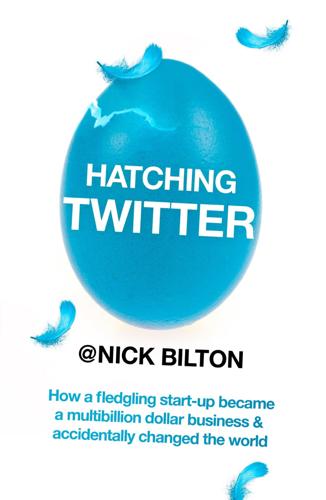
Hatching Twitter
by
Nick Bilton
Published 5 Nov 2013
There, by the pool at Kutcher’s house, with his wife, Demi Moore, sitting close by, Kutcher had pitched them on ownership of the company. Sean “Puffy” Combs, the rapper, had also tried to negotiate an ownership deal with Ev. Each time, Ev had politely responded, telling the rich and famous, who were never told no, “No.” It happened with CEOs too. At a dinner at Bill Gates’s multimillion-dollar house in Seattle, Steve Ballmer, the chief of Microsoft, told Ev if he ever wanted to sell the company, Microsoft would be very interested. Ev politely declined Ballmer. For Ev it was never about the money or the celebrities. It always went back to Ev’s vision of building something that gave people from nowhere—like, say, Clarks, Nebraska—the same equal voice as those from somewhere.
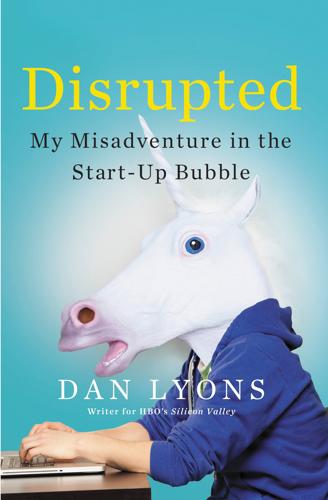
Disrupted: My Misadventure in the Start-Up Bubble
by
Dan Lyons
Published 4 Apr 2016
In the past five years, from 2010 through 2014, Zynga racked up annual losses totaling more than $800 million; Groupon lost nearly $1 billion; and Twitter reported annual net losses that added up to more than $1.5 billion, according to the 10-K forms they filed with the Securities and Exchange Commission. Old-guard tech CEOs seem baffled by the phenomenon of companies that operate for years in the red. “They make no money! In my world you’re not a real business until you make some money,” Steve Ballmer, the former CEO of Microsoft, said about Amazon in 2014, a year when the company lost $241 million yet saw its market value climb to $160 billion. Oracle CEO Mark Hurd, another old-guard business guy, expressed similar astonishment about Salesforce.com. “There’s no cash flow,” he said about that company in April 2015.
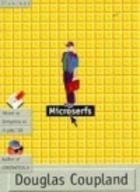
Microserfs
by
Douglas Coupland
Published 14 Feb 1995
I said that I drink too much coffee and colas, and that I'm a colon cancer statistic just waiting to happen. I said I'd love one. She handed it to me and there was a pause as she looked around my office: an NEC MultiSync monitor; a Compaq workhorse monitor; a framed Jazz poster; a "Mac Hugger" bumper sticker on my ceiling and my black-and-white photo shrine to Microsoft VP Steve Ballmer. "The shrine started as a joke," I said, "but it's sort of taking on a life of its own now. It's getting scary. Shall we worship?" It was then that she asked me, in a lowered tone, "Who's Jed?" She had seen me keyboard in my password - like HAL from 2001. And so I closed the door and told her about Jed, and you know, I was glad I was able to tell someone at last
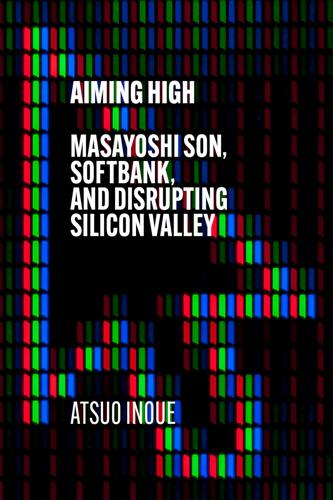
Aiming High: Masayoshi Son, SoftBank, and Disrupting Silicon Valley
by
Atsuo Inoue
Published 18 Nov 2021
‘Well, at least I can beat you in golf!’ Son declared, overflowing in confidence at the one thing he was better than Gates at. When Son stood up he was quickly surrounded by a throng of luminaries from the computer industry wishing him well and wanting to shake his hand, chief amongst whom was Steve Ballmer, the chief executive of Microsoft. At this massive convention Son had been given equal billing with Gates as the main attraction, but still felt nothing but respect and tremendous affinity for his American counterpart, whilst marking their rivalry having reached a new level. Son had only gambled in a casino once – when he was a student at Berkeley he had been to Las Vegas – and he had thrown all of his money away on the night.
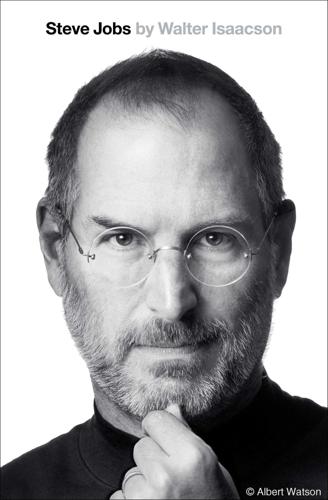
Steve Jobs
by
Walter Isaacson
Published 23 Oct 2011
In 1985, as he was being ousted from his first tour at Apple, he had visited Italy and been impressed by the gray stone of Florence’s sidewalks. In 2002, when he came to the conclusion that the light wood floors in the stores were beginning to look somewhat pedestrian—a concern that it’s hard to imagine bedeviling someone like Microsoft CEO Steve Ballmer—Jobs wanted to use that stone instead. Some of his colleagues pushed to replicate the color and texture using concrete, which would have been ten times cheaper, but Jobs insisted that it had to be authentic. The gray-blue Pietra Serena sandstone, which has a fine-grained texture, comes from a family-owned quarry, Il Casone, in Firenzuola outside of Florence.
…
Jobs waved his arms and started laughing. “I sent him one,” he said. Hertzfeld replied, “He needs six.” The iPhone was immediately dubbed “the Jesus Phone” by bloggers. But Apple’s competitors emphasized that, at $500, it cost too much to be successful. “It’s the most expensive phone in the world,” Microsoft’s Steve Ballmer said in a CNBC interview. “And it doesn’t appeal to business customers because it doesn’t have a keyboard.” Once again Microsoft had underestimated Jobs’s product. By the end of 2010, Apple had sold ninety million iPhones, and it reaped more than half of the total profits generated in the global cell phone market.
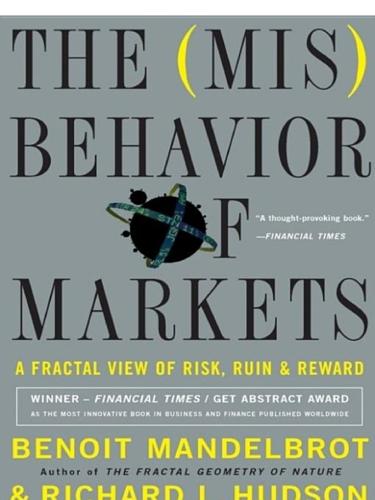
The Misbehavior of Markets: A Fractal View of Financial Turbulence
by
Benoit Mandelbrot
and
Richard L. Hudson
Published 7 Mar 2006
The conference-goers, among the best-known financiers, entrepreneurs, and CEOs in Europe—preeminent risk-takers, all—listened at first in bemusement. Not your usual conference speaker. Then they got sucked into his strange story. Some said he made more sense than their CFOs. Afterwards, in our audiencefeedback survey, they rated him as best speaker of the day—tied only by Steve Ballmer, the Microsoft CEO. As a scientist, Mandelbrot’s fame rests on his founding of fractal geometry, and on his showing how it applies in many fields. A fractal, a term he coined from the Latin for “broken,” is a geometric shape that can be broken into smaller parts, each a small-scale echo of the whole.

Everything Is Obvious: *Once You Know the Answer
by
Duncan J. Watts
Published 28 Mar 2011
During all this time, Jobs has reportedly received neither a salary nor a cash bonus—his entire compensation has been in Apple stock.20 It’s a compelling story, and the list of Apple’s successes is long enough that it’s hard to believe it’s all due to chance. Nevertheless, because Apple’s history can only be run once, we can’t be sure that we aren’t simply succumbing to the Halo Effect. For example, as, I discussed in Chapter 7, the iPod strategy had a number of elements that could easily have led it to fail, as did the iPhone. Microsoft CEO Steve Ballmer looks silly now for scoffing at the idea that consumers would pay $500 for a phone that locked consumers into a two-year contract with AT&T and didn’t have a keyboard, but it was actually quite a reasonable objection. Both products now seem like strokes of genius, but only because they succeeded.
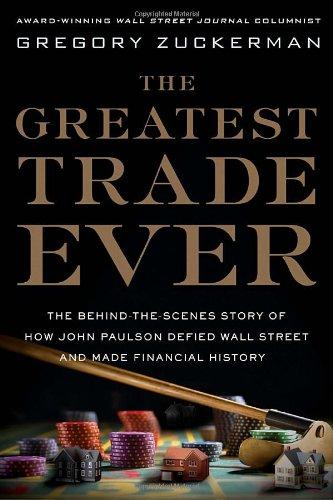
The greatest trade ever: the behind-the-scenes story of how John Paulson defied Wall Street and made financial history
by
Gregory Zuckerman
Published 3 Nov 2009
Meanwhile, their lives suck. Appointments back to back, booked solid for the next three months, they look forward to their two-week vacation in January during which they will likely be glued to their BlackBerries or other such devices. What is the point? They will all be forgotten in fifty years anyway. Steve Ballmer, Steven Cohen, and Larry Ellison will all be forgotten. I do not understand the legacy thing. Nearly everyone will be forgotten. Give up on leaving your mark. Throw the BlackBerry away and enjoy life. So this is it. With all due respect, I am dropping out. …... I truly do not have a strong opinion about any market right now, other than to say that things will continue to get worse for some time, probably years.
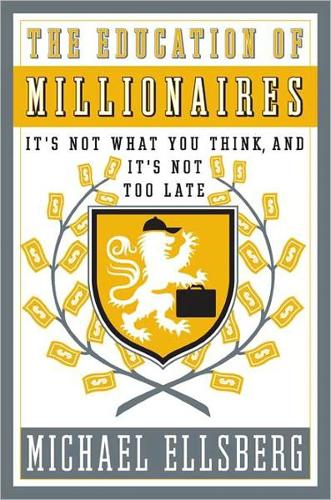
The Education of Millionaires: It's Not What You Think and It's Not Too Late
by
Michael Ellsberg
Published 15 Jan 2011
“NEC hired me for the sales department, mostly because of my blog. When I went into the interview, they had a stack of my blog posts printed out right there.” From his job at NEC, Robert got invited to a “Most Valuable Professional” meeting at Microsoft of the top corporate customers. At that meeting, someone confronted CEO Steve Ballmer publicly, saying, “You need to create a better image for Microsoft.” Ballmer responded, “OK, I’ll give a dollar to anyone in this room who comes up with a good idea right here.” Robert stood up and said, “Put a more public face on the company.” He explained how, outlining what amounted to a strategy for corporate blogging—long before the concept of “corporate blogging” existed.

The Elements of Power: Gadgets, Guns, and the Struggle for a Sustainable Future in the Rare Metal Age
by
David S. Abraham
Published 27 Oct 2015
It’s not hyperbole to state that the fate of the planet and our ability to live a sustainable future in which technology can freely flow to the billions who do not yet have access depends on our understanding and production of rare metals and our avoidance of conflict over them. I Metals, Metals Everywhere Microsoft CEO Steve Ballmer was incredulous. “There’s no chance that the iPhone is going to get any significant market share. No chance,” Ballmer prophesied during a CEO Forum before Steve Jobs released the iPhone in June 2007. But, by the end of the first week of sales, most storeroom shelves were bare; Apple and its AT&T partner sold hundreds of thousands of phones.

The Corruption of Capitalism: Why Rentiers Thrive and Work Does Not Pay
by
Guy Standing
Published 13 Jul 2016
The mortgage deduction alone costs $70 billion a year, with three-quarters going to homeowners with annual incomes of over $100,000.10 Four times as much goes to the wealthiest fifth in mortgage interest deductions as on social housing for the poorest fifth. Some tax breaks that do not amount to much in total are worth a great deal to the few who gain from them. The USA gives tax breaks to wealthy owners of racehorses and professional sports teams – halving the $2 billion price that Steve Ballmer, billionaire co-founder of Microsoft, paid for the LA Clippers basketball team. UK tax breaks include £3 billion a year in reduced capital gains tax for individuals selling their businesses. According to Richard Murphy of Tax Research UK, in the tax year 2013/14, £1.8 billion of this benefited just 3,000 people, who each sold their company stakes for more than £1 million.
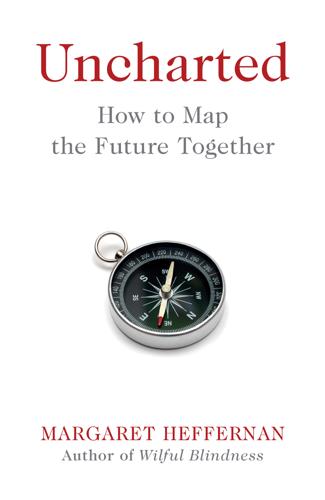
Uncharted: How to Map the Future
by
Margaret Heffernan
Published 20 Feb 2020
Refusing to trust that any one plan would prove perfect, they kept recombining different pieces of the puzzle until, by 2013, the company found a first step: selling the handset business to Microsoft would buy the company time. Siilasmaa’s quiet, consultative style even persuaded Microsoft’s famously incandescent Steve Ballmer to negotiate in good faith. At no point did Siilasmaa think about Nokia as just a financial entity. The company contained huge meaning for employees, business partners, customers and the Finnish nation as a whole, all proud of a business that had pioneered one of the coolest technologies of their lifetime.

Hit Makers: The Science of Popularity in an Age of Distraction
by
Derek Thompson
Published 7 Feb 2017
The catch, naturally, was that these three revolutionary new products were in fact one product, combining a touch screen, a music player, a phone, and Internet access. “And we are calling it: iPhone,” Jobs concluded. The audience laughed and hollered and threw claps over their heads. But outside the Moscone Center, skepticism was en vogue. Former Microsoft CEO Steve Ballmer considered the prospect of a $500 cell phone to be beyond ludicrous. (“There’s no chance that the iPhone is going to get any significant market share,” he said. “No chance.”) In June 2007, a few days before the iPhone appeared in stores, the media and advertising company Universal McCann issued a blockbuster report on Apple’s new product.

Coding Freedom: The Ethics and Aesthetics of Hacking
by
E. Gabriella Coleman
Published 25 Nov 2012
Although Microsoft stated in its internal memos that it would not lead a campaign of fear, uncertainty, and doubt against open-source products, it feverishly implemented the well-worn corporate tactic of disinformation, using everything in the company’s powerful marketing arsenal to discredit the reliability of Linux. Launching a direct attack against the bulwark of F/OSS, the GPL, Microsoft representatives described this legal agreement with three of the most feared words in the United States: cancer, communism, and un-American. In 2001 during a media interview, Microsoft’s CEO, Steve Ballmer, stated unabashedly, “Linux is a cancer that attaches itself in an intellectual property sense to everything it touches” (quoted in Greene 2001). Even amid various advertising campaigns, none of these words ever stuck. Microsoft’s early assaults against Linux only fueled an existing anti-Microsoft sentiment among developers.
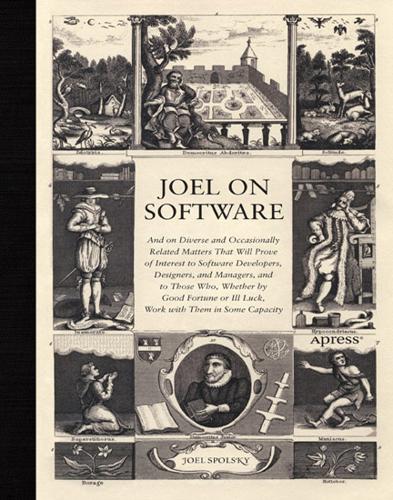
Joel on Software
by
Joel Spolsky
Published 1 Aug 2004
And therefore the most useful operating system is the one that has the most useful applications. The logical conclusion of this is that if you're trying to sell operating systems, the most important thing to do is make software developers want to develop software for your operating system. That's why Steve Ballmer was jumping around the stage shouting "Developers, developers, developers, developers."1 It's so important for Microsoft that the only reason they don't outright give away development tools for Windows is because they don't want to inadvertently cut off the oxygen to competitive development tools vendors (well, those that are left), because having a variety of development tools available for their platform makes it that much more attractive to developers.
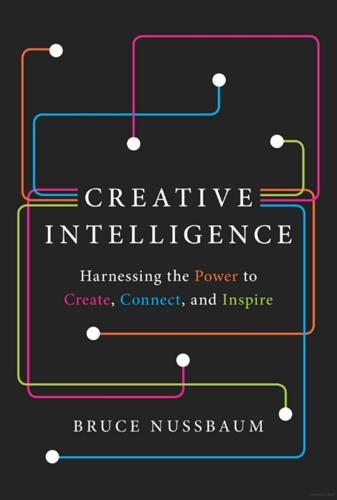
Creative Intelligence: Harnessing the Power to Create, Connect, and Inspire
by
Bruce Nussbaum
Published 5 Mar 2013
As Walter Isaacson’s biography reveals, Jobs was not a nice guy or an easy person to get along with, especially if you were close to him. Yet he wanted to instill a level of aesthetic perfection in Apple products so that they would remain distinctive and never fall into the rut of “mechanical reproduction” or pure salesmanship (which is where he saw Microsoft going under Steve Ballmer’s leadership). He saw himself as a designer of things that people didn’t even know they wanted until he created them. But there’s more to Apple products than their beauty. Their common aesthetic suggests that they are connected to one another, a “family” of products. The iTunes app acts as both a commercial and a community hub, allowing music and other entertainment to be purchased with ease, and linking all the products to the ever-evolving “cloud” that represents designers’ dreams of connectivity.
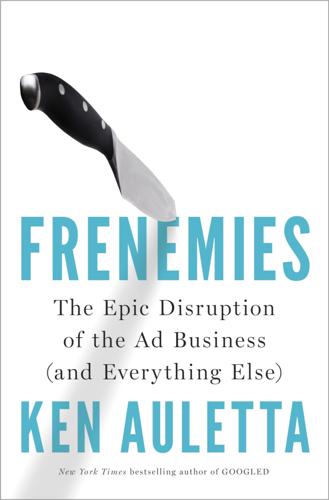
Frenemies: The Epic Disruption of the Ad Business
by
Ken Auletta
Published 4 Jun 2018
Michael Kassan would come to CES with his friend Irwin Gotlieb to walk the floors of the various hotels that house the exhibitions. Then CES expanded its reach, and Michael Kassan assumed an outsized role. In 2010, to broaden their support in the tech community, CES called on Kassan to help lure Steve Ballmer, then CEO of Microsoft, a MediaLink client, to attend MediaLink’s cocktail party. Ballmer become a regular at this event. Kassan started stumping for more advertisers to attend CES. Gary Shapiro, the president and CEO of the Consumer Technology Association, which produces CES, liked the idea, and Kassan offered a deal Shapiro welcomed.

Drunk: How We Sipped, Danced, and Stumbled Our Way to Civilization
by
Edward Slingerland
Published 31 May 2021
After I presented these studies in a talk at a Google campus some years ago, I was immediately brought by my excited hosts to their impressive whiskey room. This is where coders retire for a dram of liquid inspiration when they run into a creative wall. I was also introduced on this visit to the concept of the Ballmer Peak (Figure 4.1). Attributed, perhaps apocryphally, to Steve Ballmer, the former Microsoft CEO, this is the extremely high but very narrow peak of a curve describing one’s level of coding skill as a function of blood alcohol content (BAC): Figure 4.1. xkcd on the Ballmer Peak (xkcd.com) Legends circulate of coders, in proper engineering fashion, hooking themselves up to alcoholic IV drips to remain hovering around the BAC sweet spot.
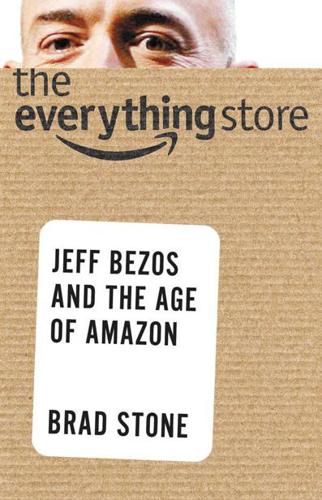
The Everything Store: Jeff Bezos and the Age of Amazon
by
Brad Stone
Published 14 Oct 2013
Apple’s founder reportedly fired employees in the elevator and screamed at underperforming executives. Perhaps there is something endemic in the fast-paced technology business that causes this behavior, because such intensity is not exactly rare among its CEOs. Bill Gates used to throw epic tantrums. Steve Ballmer, his successor at Microsoft, had a propensity for throwing chairs. Andy Grove, the longtime CEO of Intel, was known to be so harsh and intimidating that a subordinate once fainted during a performance review. Jeff Bezos fit comfortably into this mold. His manic drive and boldness trumped other conventional leadership ideals, such as building consensus and promoting civility.
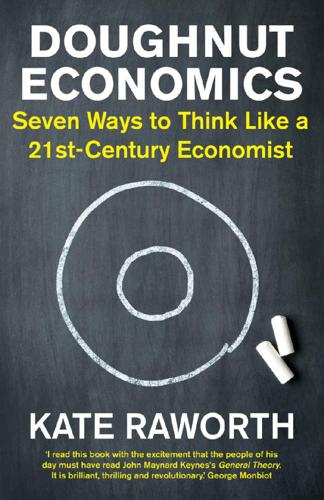
Doughnut Economics: Seven Ways to Think Like a 21st-Century Economist
by
Kate Raworth
Published 22 Mar 2017
So remember the 21-year-old Finnish computer student, Linus Torvalds, who in 1991 was writing the kernel of an open-source operating system – just for a hobby, he said – which quickly morphed into Linux, now the most widely used computer operating system in the world. At the time, Microsoft’s CEO Steve Ballmer called Linux ‘a cancer’, but today even Microsoft has embraced the movement by using Linux in its own products.43 ‘The story of open-source software is a little portal to the future for us,’ Muirhead told me, and he is optimistic. ‘Once you put something in the commons, you can’t take it away,’ he explained, ‘so every single day the knowledge commons grows and becomes more useful.

Think Like a Rocket Scientist: Simple Strategies You Can Use to Make Giant Leaps in Work and Life
by
Ozan Varol
Published 13 Apr 2020
When asked in a survey whether they “like the idea of having one portable device” to fulfill all their needs, only about 30 percent of Americans, Japanese, and Germans said yes.37 They seemed to prefer carrying around a separate phone, a separate camera, and a separate music player instead of a single device that could perform all three functions. Echoing the survey results, then Microsoft CEO Steve Ballmer said, “There’s no chance that the iPhone is going to get any significant market share. No chance.” The iPhone didn’t prove the survey wrong. As author Derek Thompson explains, the survey accurately measured the participants’ “indifference to a product they had never seen and did not understand.”

The Everything Blueprint: The Microchip Design That Changed the World
by
James Ashton
Published 11 May 2023
Microsoft paid several million dollars to use the Rolling Stones’ song ‘Start Me Up’ as the soundtrack for the system that featured a ‘start’ button to organise desktop applications into groups. The US chat-show host Jay Leno, with bouffant grey hair and baggy chinos of the era, presented a glitzy launch event in Redmond, Washington. Microsoft executives led by the bombastic executive vice president Steve Ballmer broke into an awkward on-stage dance routine as the music blared. Consumers were just as excited. In the first year, they bought a record-breaking 40 million copies of the software that synced exclusively with Intel hardware. Intel’s leaders did not need to take to the stage for the company to develop its own swagger.

Machine, Platform, Crowd: Harnessing Our Digital Future
by
Andrew McAfee
and
Erik Brynjolfsson
Published 26 Jun 2017
Its groundbreaking design and novel features, including multitouch screen, powerful mobile Internet browser, accelerometer, and GPS made it an instant hit, with rapturous reviews and sales of over 6 million handsets in its first year. The iPhone had plenty of doubters prior to its release. These included Microsoft cofounder Steve Ballmer, who said, “$500? Fully subsidized? With a plan? I said that is the most expensive phone in the world. And it doesn’t appeal to business customers because it doesn’t have a keyboard. Which makes it not a very good email machine.” Two thousand seven and later years proved the skeptics very wrong.
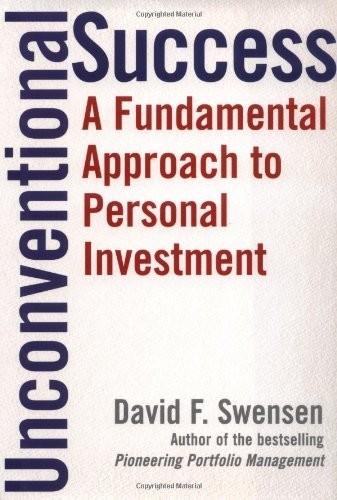
Unconventional Success: A Fundamental Approach to Personal Investment
by
David F. Swensen
Published 8 Aug 2005
In sharp contrast to management’s loss of a mere opportunity, when share prices decrease, shareholders lose cold, hard cash. Options-based compensation schemes represent a no-lose game for management of publicly traded companies. Microsoft provides a textbook example of using option grants to insulate employees from share price declines. In April 2000, chief executive Steve Ballmer faced a problem of low morale among employees concerned about the consequences of the Justice Department’s antitrust activity and a four-month, 44 percent stock price decline. To boost spirits, Ballmer awarded more than 34,000 Microsoft employees stock options priced at the then current stock price.

Work Rules!: Insights From Inside Google That Will Transform How You Live and Lead
by
Laszlo Bock
Published 31 Mar 2015
Jack and Suzy Welch, “The Case for 20-70-10,” Bloomberg Businessweek, October 1, 2006, http://www.businessweek.com/stories/2006-10-01/the-case-for-20-70-10. 134. Ibid. 135. Kurt Eichenwald, “Microsoft’s Lost Decade,” Vanity Fair, August 2012, http://www.vanityfair.com/business/2012/08/microsoft-lost-mojo-steve-ballmer. 136. Tom Warren, “Microsoft Axes Its Controversial Employee-Ranking System,” The Verge, November 12, 2013, http://www.theverge.com/2013/11/12/5094864/microsoft-kills-stack-ranking-internal-structure. 137. David A. Garvin, Alison Berkley Wagonfeld, and Liz Kind, “Google’s Project Oxygen: Do Managers Matter?”

Machines of Loving Grace: The Quest for Common Ground Between Humans and Robots
by
John Markoff
Published 24 Aug 2015
Microsoft gave Trower a small group of researchers and he went off to build a simulator and a graphical programming language. They named it the Microsoft Robotics Developer Studio. Then, however, Gates retired to start his foundation, and everything changed at Microsoft. The new chief executive, Steve Ballmer, had a very different focus. He was more concerned about making money and less willing to take risks. Through Microsoft veteran and chief strategy officer Craig Mundie, he sent Trower a clear message: tell me how Microsoft is going to make money on this. Ballmer was very clear: he wanted a business that generated one billion dollars in revenue annually within seven years.

The Future of Technology
by
Tom Standage
Published 31 Aug 2005
Mr Lane, for instance, not only believes in the mom test but also has a “sister theory” to explain market inertia. This is mainly because he has a sister who spent a long career as an executive with an American airline, where she “fought every technological change over 30 years, even though she couldn’t say why”. Mom, however, is invoked most – if not necessarily heeded. According to an industry legend, Steve Ballmer, now the boss of Microsoft, conducted a mom test before the launch of Windows 95, using his own mother as the guinea pig. When she had finished trying it out, Ms Ballmer asked, “How do I turn it off?” Her son, somewhat irked, pointed to the start button. “You go to the start button to stop?” asked his mother, quite perplexed.
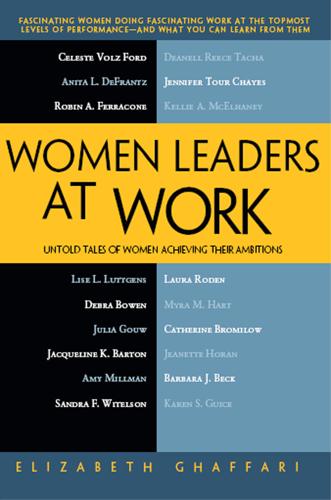
Women Leaders at Work: Untold Tales of Women Achieving Their Ambitions
by
Elizabeth Ghaffari
Published 5 Dec 2011
So I pitched the idea, showing why I thought Microsoft needed expertise in these areas. I talked about where technology was moving and where Microsoft would want to be moving. I presented the argument about the kinds of people who were located in Cambridge who wouldn't relocate. Surprisingly, it took just a few weeks actually for Bill Gates and Steve Ballmer to say “yes” to the idea. It all happened very quickly. Ghaffari: Was the idea to set up the New England Research Center largely your initiative or Christian's, would you say? Chayes: I think this one was more my initiative. Christian was very happy. He was doing well, and we had a great team at the Theory Group.
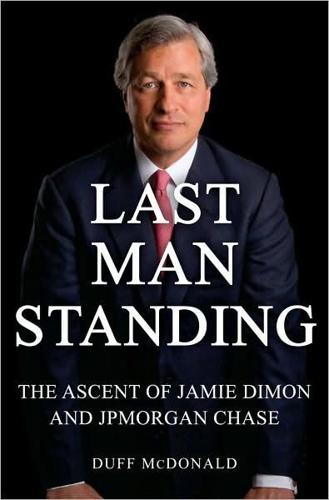
Last Man Standing: The Ascent of Jamie Dimon and JPMorgan Chase
by
Duff McDonald
Published 5 Oct 2009
The Rupert Murdochs, Sumner Redstones, and Sam Zells of the world asked for Lee by name when working with J.P. Morgan. He also hosts an annual confab in Deer Valley that draws an enviable roster of heavyweights, including DreamWorks’ Jeffrey Katzenberg, General Electric’s Jeffrey Immelt, Microsoft’s Steve Ballmer, and the NBA commissioner, David Stern. (Shortly after the deal, Dimon asked Lee to join him for dinner at the Post House, a steak house in the Lowell hotel on East 63rd Street. Moments after sitting down, Lee pulled a piece of paper out of his pocket and put it down on the table next to him.
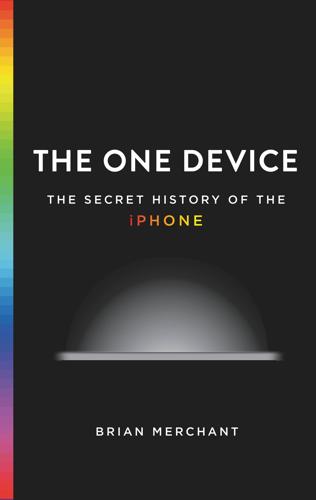
The One Device: The Secret History of the iPhone
by
Brian Merchant
Published 19 Jun 2017
But despite all the spectacle, after a strong opening weekend—when Apple says it moved 270,000 units in thirty hours or so—sales were actually relatively slow. For now, the app selection was locked, the phone ran only on painfully slow 2G networks, and nothing was customizable, not even the wallpaper. And it was lambasted for being too expensive. Microsoft CEO Steve Ballmer famously scoffed, “Five hundred dollars? Fully subsidized? With a plan?… That is the most expensive phone in the world.” The hit features were probably Safari and Maps—two media-rich, multitouch-powered experiences that set the stage for everything the iPhone was capable of. That, and the touchscreen itself.
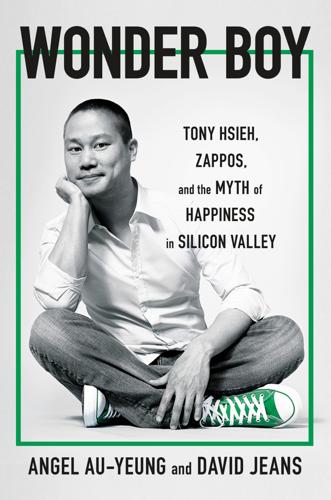
Wonder Boy: Tony Hsieh, Zappos, and the Myth of Happiness in Silicon Valley
by
Angel Au-Yeung
and
David Jeans
Published 25 Apr 2023
Despite Tony’s personal withdrawal, the board was still searching for funding that could help it survive a potential economic crisis but realized that LinkExchange remained an attractive asset with solid financials. In the end, Microsoft came to LinkExchange with the highest offer. Hadi, the twin brother of Ali, who worked at Microsoft, sent a message to Microsoft’s chief executive at the time, Steve Ballmer, vouching for LinkExchange. As part of the deal, Microsoft wanted all three founding partners—Tony, Sanjay, and Ali—to stay at LinkExchange for another twelve months. In most acquisitions, the board of directors has a say in such requests. But in this instance, in another vote of confidence, Michael Moritz turned to the three founders during a board meeting and said, “Look, guys, it’s your company.
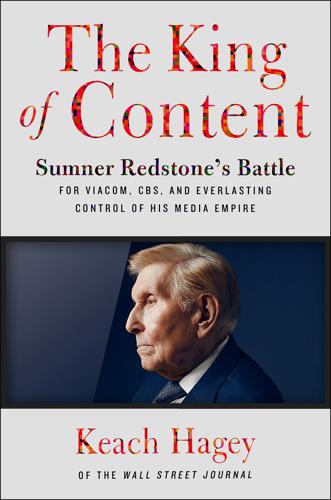
The King of Content: Sumner Redstone's Battle for Viacom, CBS, and Everlasting Control of His Media Empire
by
Keach Hagey
Published 25 Jun 2018
O’Donnell had just become a household name in Los Angeles for his role in another case that involved a rich, older man of questionably sound mind, a much-younger girlfriend, and a high-profile media asset hanging in the balance. He had represented Shelly Sterling, the wife of Los Angeles Clippers owner Donald Sterling, in a case that led to her selling the team to former Microsoft chief Steve Ballmer after her husband’s racist rant was released to TMZ by an ex-girlfriend. Sumner had paid O’Donnell’s $100,000 retainer, and for months he had worked closely with Bishop to shore up Sumner’s gifts to the women. Now, with those bequests stripped away, O’Donnell suddenly found himself squaring off against Loeb & Loeb as he tried to get Manuela an audience with Sumner and a chance to reclaim her belongings.
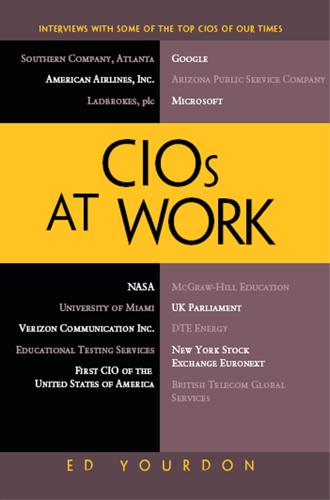
CIOs at Work
by
Ed Yourdon
Published 19 Jul 2011
And it is leadership like that that we think is a role we can play in terms of helping develop useful models and frameworks for the industry. Yourdon: I’ve got a bunch of questions that I can’t avoid asking because I’m sure everyone will want to know—and that is the question of whether Bill Gates or Steve Ballmer hired you or promoted you into your position, or whether you have any other tidbits, you know, about them that you want to talk about. Scott: Well, I actually worked for Kevin Turner, who was our Chief Operating Officer at Microsoft, but Steve was a part of the interview process, and I’d actually worked with Bill on a number of different things even before coming to Microsoft—so it’s probably the only job where I’ve gone into the job knowing the senior executives and the company reasonably well before coming to take the job.

The Future of the Internet: And How to Stop It
by
Jonathan Zittrain
Published 27 May 2009
One manifestation of the breadth of what can be patented is the famous patent issued in 2002 for swinging sideways while on a swing. That patent was issued to a five-year-old child. See U.S. Patent No. 6,368,227 (issued Apr. 9, 2002). 70. See Posting of Adrian Kingsley-Hughes to Gear for Geeks, Ballmer: Linux “Infringes our intellectual property” http://blogs.zdnet.com/hardware/?p=154 (Nov. 17, 2006, 06:55), discussing Steve Ballmer’s assertion that Linux infringes Microsoft’s patents at the Professional Association for SQL Server conference in Seattle on November 16, 2006); Roger Parloff, Microsoft Takes on the Free World, FORTUNE, May 14, 2007, http://money.cnn.com/magazines/fortune/fortune_archive/2007/05/28/100033867/index.htm?
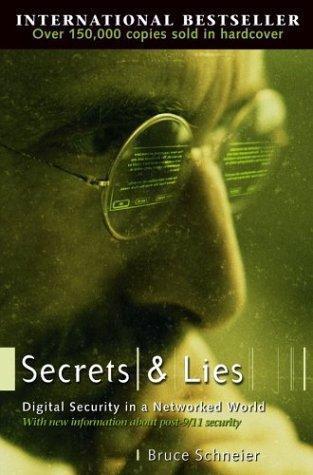
Secrets and Lies: Digital Security in a Networked World
by
Bruce Schneier
Published 1 Jan 2000
Piracy is just another way of boosting market share. Microsoft had exactly this in mind when they made a big push to get their products translated into Chinese and distributed across that country. They knew they would be pirated; they knew that they would make less than one sale for every ten copies used. Microsoft’s Steve Ballmer has been quoted as saying: “If you’re going to get pirated, you want them to pirate your stuff, not your competitors’ stuff. In developing countries, it is important to have a high share of the piracy software.” When China enters the free world, they will already be Microsoft compatible. Until then, Microsoft isn’t losing anything.

Terms of Service: Social Media and the Price of Constant Connection
by
Jacob Silverman
Published 17 Mar 2015
In a meeting with the W3C, the international consortium that helps devise standards for the Web, a vice president of the Direct Marketing Association reportedly “proposed that Do Not Track signals should actually permit data collection for advertising purposes, the very thing the mechanisms were designed to control.” The Association of National Advertisers then published an open letter to Microsoft CEO Steve Ballmer, criticizing his company for automatically enabling Do Not Track on its Internet Explorer 10 browser (which at the time hadn’t even yet been released). Even the most cursory privacy measures, it seemed, would be vigorously contested. But the effort was doomed from the beginning. The Privacy Bill of Rights called for corporations to sign up voluntarily, with enforcement entrusted to the congenitally toothless FTC.
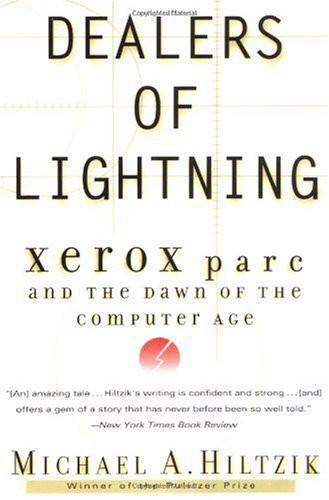
Dealers of Lightning
by
Michael A. Hiltzik
Published 27 Apr 2000
Carrying a portfolio of his work, Simonyi entered Suite 819 relaxed and confident, thanks to his mistaken impression that Metcalfe had already called to smooth the way. In fact, he was an unexpected visitor. Bill Gates being tied up at the moment with a delegation from a Japanese manufacturing company, Simonyi was escorted instead into the office of Steve Ballmer, a friend of Gates’s from Harvard. Unlike Gates, Ballmer had stayed at Harvard to graduate, after which he signed on to be Microsoft’s maniacal chief salesman and hyper-motivational troop leader. “I projected supreme confidence and everything,” Simonyi recalled. “I had a great portfolio and so Ballmer was incredibly impressed.”
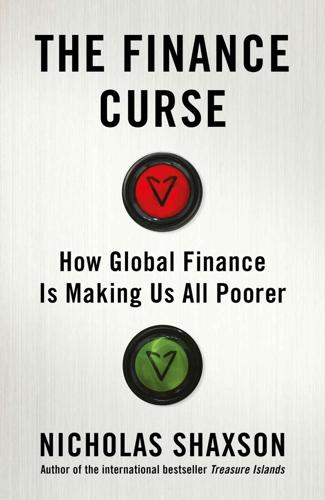
The Finance Curse: How Global Finance Is Making Us All Poorer
by
Nicholas Shaxson
Published 10 Oct 2018
The IDA used ‘flagship marketing’, aggressively targeting the big global names, whose vote of confidence would then make it easier to attract others. They got Apple to invest in 1980, then leveraged that to persuade Intel to move in. Next they went for Microsoft. It worked every time. ‘I’m normally the sales guy,’ says Steve Ballmer, the CEO of Microsoft, recalling the extraordinary job the IDA did on him. ‘That is the first lunch I’ve been to where the government was selling to me!’ The IDA chiselled Ireland’s quirky international image into appealing new forms. The traditional American view of Ireland was ‘a romantic misty isle peopled by characters straight out of The Quiet Man and full of bog roads and stray donkeys’, says White.

Army of None: Autonomous Weapons and the Future of War
by
Paul Scharre
Published 23 Apr 2018
The fear that AI could one day develop to the point where it threatens humanity isn’t shared by everyone who works on AI. It’s hard to dismiss people like Stephen Hawking, Bill Gates, and Elon Musk out of hand, but that doesn’t mean they’re right. Other tech moguls have pushed back against AI fears. Steve Ballmer, former CEO of Microsoft, has said AI risk “doesn’t concern me.” Jeff Hawkins, inventor of the Palm Pilot, has argued, “There won’t be an intelligence explosion. There is no existential threat.” Facebook CEO Mark Zuckerberg has said that those who “drum up these doomsday scenarios” are being “irresponsible.”
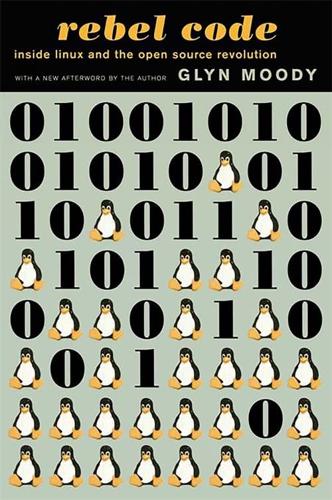
Rebel Code: Linux and the Open Source Revolution
by
Glyn Moody
Published 14 Jul 2002
In the face of these developments, claims that free software is a technological laggard—or that GNU/Linux is unable to scale—are patently untenable. So, once again, Microsoft has changed tack. During 2001, it abandoned its arguments based on technology and turned, with what looked like increasing desperation, to the area of intellectual property. This new campaign culminated in the remarks of Microsoft’s CEO, Steve Ballmer, to the Chicago Sun-Times in June 2001, when he said, “Linux is a cancer that attaches itself in an intellectual property sense to everything it touches.” That the head of one of the most powerful companies on earth could describe a program started by a twenty-one-year-old computer student in his bedroom, and whose only fault is that it provides freedom to its users, as a “cancer” is a sad reflection on the priorities and values of this executive.
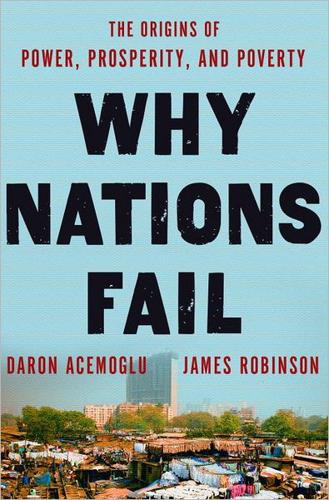
Why Nations Fail: The Origins of Power, Prosperity, and Poverty
by
Daron Acemoglu
and
James Robinson
Published 20 Mar 2012
As institutions influence behavior and incentives in real life, they forge the success or failure of nations. Individual talent matters at every level of society, but even that needs an institutional framework to transform it into a positive force. Bill Gates, like other legendary figures in the information technology industry (such as Paul Allen, Steve Ballmer, Steve Jobs, Larry Page, Sergey Brin, and Jeff Bezos), had immense talent and ambition. But he ultimately responded to incentives. The schooling system in the United States enabled Gates and others like him to acquire a unique set of skills to complement their talents. The economic institutions in the United States enabled these men to start companies with ease, without facing insurmountable barriers.

WTF?: What's the Future and Why It's Up to Us
by
Tim O'Reilly
Published 9 Oct 2017
Well, I can’t, I don’t have that program at all, so it doesn’t put me in a morally compromised position. . . .” See http://www.oreilly.com/tim/archives/mikro_discussion.pdf. 27 Google is now running on well over a million servers: Google does not actually disclose this information, but in July 2013, Microsoft then-CEO Steve Ballmer noted that Microsoft Bing was running on almost that number; Google serves many more users, and the number has only grown since then. See Sebastian Anthony, “Microsoft Now Has One Million Servers—Less than Google, but More than Amazon, Says Ballmer,” Extremetech, retrieved March 29, 2017, https://www.extremetech.com/extreme/161772-microsoft-now-has-one-million-servers-less-than-google-but-more-than-amazon-says-ballmer. 28 one of the most significant books of the twentieth century: Elizabeth Diefendorf, ed., The New York Public Library’s Books of the Century (New York: Oxford University Press, 1996), 149. 29 “What Is Web 2.0?”
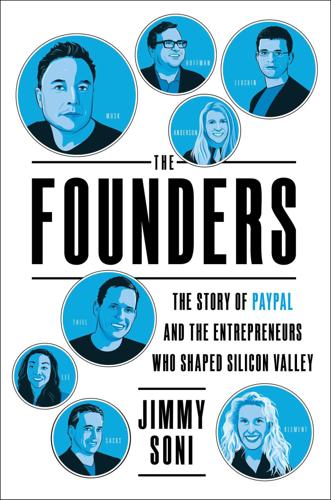
The Founders: The Story of Paypal and the Entrepreneurs Who Shaped Silicon Valley
by
Jimmy Soni
Published 22 Feb 2022
Strategically, Musk saw V2 as step one toward the comprehensive, global-center-of-all-money X.com. “That required a lot more software than what PayPal had,” Musk recalled. “So therefore it made sense, in my view, to use the most powerful development system in the world”—Microsoft. In July 2000, the X.com team traveled to Redmond and met with Microsoft’s top brass, including CEO Steve Ballmer. The company’s weekly newsletter reported on the meeting with enthusiasm: Our engineering team recently had a meeting with some very senior members of Microsoft—so senior that some of them report directly to Bill Gates [then-chairman of the board]! What does Microsoft want with us? Our advice!

This Is How They Tell Me the World Ends: The Cyberweapons Arms Race
by
Nicole Perlroth
Published 9 Feb 2021
Others justified their sales to governments as their patriotic duty. But there were eighteen million software programmers in the world. If Microsoft could recognize those programmers in a more meaningful way, it could tap their brainpower for good, and invite the best to come to Redmond. When Moussouris pitched Steve Ballmer’s generals in 2011, they were receptive but not ready to pull the trigger. They needed more data. For the next two years she compared herself to Cassandra, “doomed to know the future but nobody believes her until she can show them the data.” By 2013 she had two years’ worth of data showing that Microsoft was now losing bug reports to third-party brokers and intermediaries.

The Bill Gates Problem: Reckoning With the Myth of the Good Billionaire
by
Tim Schwab
Published 13 Nov 2023
Journalist Kurt Eichenwald, in a long 2012 Vanity Fair profile, described the company’s culture of routine, arbitrary mass lay-offs as destroying employee morale and productivity, and maiming the company’s dynamism throughout the 2000s. While Eichenwald attributes this culture to Microsoft’s then CEO Steve Ballmer, he could have directed it at the company’s then board chairman, Bill Gates. The Gates Foundation’s impetuousness also manifests in its jettisoning promising projects and doubling down on failed strategies. One former employee told me that Bill Gates had become almost dogmatic about the virtues of a Pfizer contraceptive called Sayana Press, an injection that can be self-administered, saving women in rural areas from having to make long trips to distant clinics.
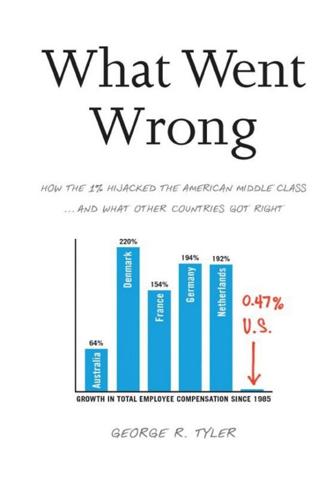
What Went Wrong: How the 1% Hijacked the American Middle Class . . . And What Other Countries Got Right
by
George R. Tyler
Published 15 Jul 2013
As Princeton economist Alan Blinder explains, the mere threat of offshoring creates an environment that depresses wages.11 It has proven to be an effective tool to coerce concessions from employees or to fend off unionization, with extortion commonly practiced even by the largest and most illustrious US firms. For example, some 40 percent of Microsoft’s employees already work abroad, yet chief executive Steve Ballmer has threatened to export even more jobs if Democratic politicians close foreign tax havens. “We’re better off taking lots of people and moving them out” of the United States, citizen of the world Ballmer asserted.12 Any obligation of industry leaders to nurture the American economy and its workers by even the most profitable and bluest of blue-chip US multinationals has been vitiated by Reaganomics.
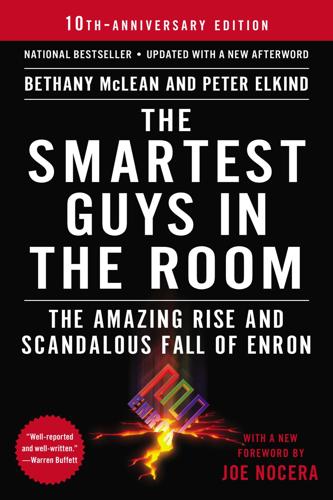
The Smartest Guys in the Room
by
Bethany McLean
Published 25 Nov 2013
BusinessWeek celebrated his new position with a worshipful cover story, featuring Skilling precisely as he wanted the world to see him, dressed in ultracool black, electricity sizzling through his body. Worth magazine described him as “hypersmart” and “hyperconfident”—and named him America’s second-best CEO (just behind Microsoft’s Steve Ballmer) before he’d even been on the job three months. Merrill Lynch’s Rick Gordon e-mailed Skilling to tell him that David Komansky, the firm’s CEO, was searching for “potential new board members”—and wanted to “get together” with him. Besides, these were the Enron glory days. Remember 1999, when the stock had returned 58 percent?
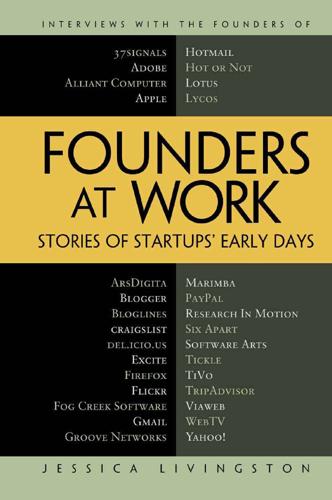
Founders at Work: Stories of Startups' Early Days
by
Jessica Livingston
Published 14 Aug 2008
We talked to a headhunting firm, and the guy was candid with me and said, “Look, we can’t recruit a COO for you because anybody who is capable of doing that job for a company at your level would demand to be the CEO.” And I thought, “That’s kind of crazy. How could they be the CEO? They don’t know the business or the customers. How could we just plunk them down?” In retrospect, that was pretty good thinking; look at Microsoft: it took them 20 years to hand off from Bill Gates to Steve Ballmer. He needed 20 years of training to take that job. Jack Welch was at GE for 20 years before he became CEO. Sometimes it does work, but I think for these fragile little companies, just putting a generic manager at the top is oftentimes disastrous. There was no way we could have hired first-rank businesspeople in that environment.
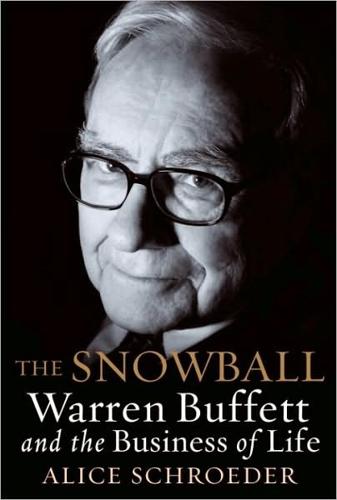
The Snowball: Warren Buffett and the Business of Life
by
Alice Schroeder
Published 1 Sep 2008
The naked mole rat was a superior beast, not only insensitive to pain but parthenogenic: The queen of the colony fertilizes and gives birth without assistance from the males. Munger and Myhrvold held an animated conversation about the sex life of mole rats while the others sat listening in numb disbelief.6 The next morning, Gates took Buffett and Munger over to Microsoft so that his number two, Steve Ballmer, and half a dozen engineers could interview them, almost as anthropologists, so strange did it seem to them that these two incredibly brilliant men were such latecomers to the world of computers. They were like a couple of cavemen savants discovered in the bush who had seen an airplane but wouldn’t take a ride.